

SOHKYRBAM DOMPHLANG VILLAGE
UNDER JIRANG C&RD BLOCK
DISTRICT: RI BHOI
17th Jan, 2024
COMMUNITY LED LANDSCAPE MANAGEMENT PROJECT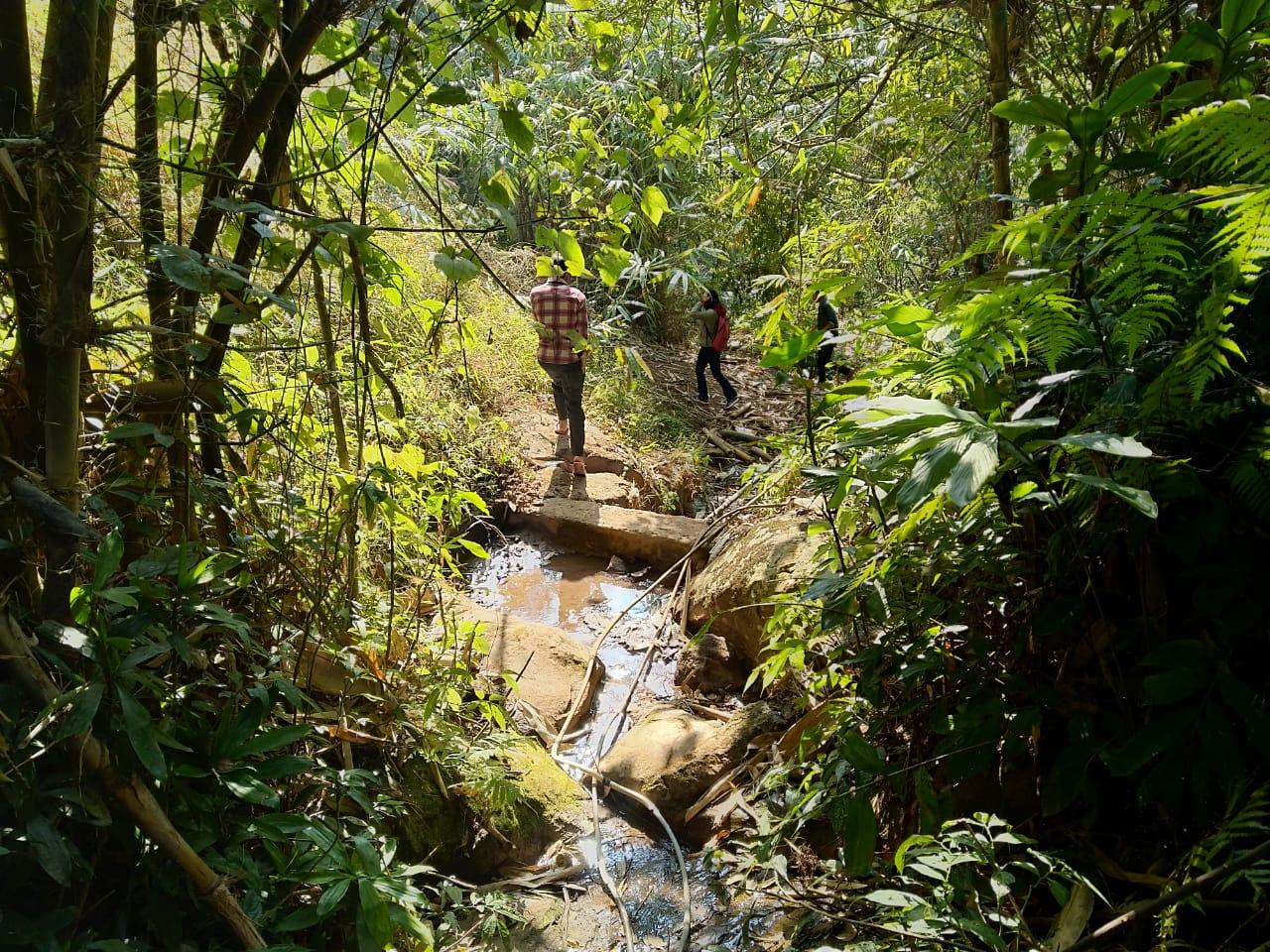
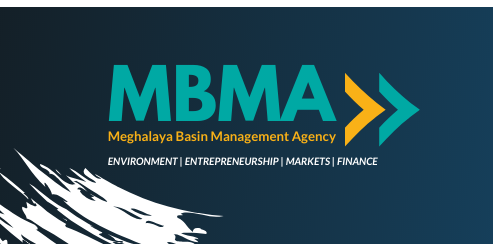

Community Led Landscape Management Project (CLLMP)
The Government of Meghalaya with financial help from the World Bank is implementing the Meghalaya Community Led Landscape Management Project (MCLLMP). The project will cover the entire state of Meghalaya and implementation of community led plans will be rolled out in phase manner throughout the state. The Meghalaya Basin Management Agency (MBMA) will facilitate community-led planning by providing support, technical inputs and funding.
The project is intended to strengthen community-led natural resources management in selected landscapes within the 7 districts of the state. This would be achieved through a variety of planning, capacity building, and on-the-ground interventions to promote the conservation, sustainable use of natural resources, social inclusion and community mobilisation; building traditional knowledge and learning, mapping of natural resources management; strengthening the community institutions and creating linkage with financial institutions and community organizations.
The project interventions include preparation of community led natural resource management plans. The CLLMP has the following three components:
Strengthening Knowledge and Capacity of Communities for Natural Resources Management
Community-Led Landscape Planning and Implementation
Project Management and Governance
The project objective is “to manage and conserve the natural resources, especially forests, soil and water sources, in a manner that supports the financial and physical well-being of communities in the State”
Introduction
SohkyrbamDomphlang Village falls under Jirang
C&RD block of Ri-Bhoi district in the state of Meghalaya. The
village is at a distance of 102 kms from the district headquarters
and a total distance of 154 kms from Shillong, the state capital. It
falls under Hima Nongkhlaw with a total geographical area of 678 ha
and a total population of 600 villagers.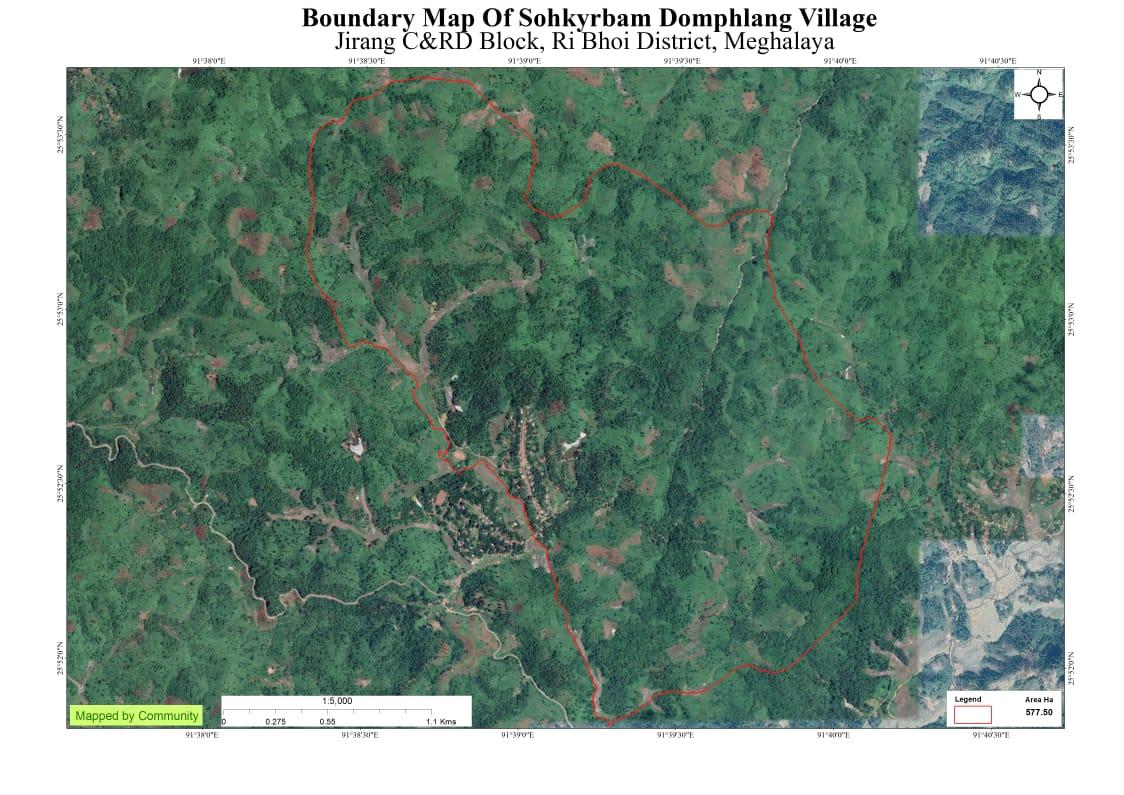
Village History of SohkyrbamDomphlang
SohkyrbamDomphlang village is located on top of a scenic hill in Western part of Ri-Bhoi District and it was founded in the year 1980. The village got its name from a tree called “Sohkyrbam” (Dilleniaindica) that is in the village and “Domphlang” is a kind of grass which the villagers used to cover houses in the olden times. In the year 1974 some people came to reside on top of this hill which include Binondo Sangma, MolinsonMakhroh, BiyonSohlawa, SailesMarak, Prim Sohkhwai, and they were followed in the year 1975 by Silas Sohkhwai (church elder), Jop Sing Sohkhwai, NobinNongkling, Hi Narleng, Edi’s father, BrendroMakhroh, Brensleuy Narleng, Shim Mawiong, DringsonSohkhwai, JronlySyngkli and DerilaSohkhwai. There were a total of 16 households with a population of around 111 people in 1975.
These people all shifted here from Sohkyrbam, although they were still under the jurisdiction of the same Sordar. As there were two religions at Sohkyrbami.e Protestants and Catholics so there were major differences and instability between the two and hence the Protestants shifted from Sohkyrbam to SohkyrbamDomphlang to form a new village and Shri. DringsonSohkhwai was appointed the Headman of the village even though at the time he was also still the leader of Sohkyrbam village. In the year 1980 SohkyrbamDomphlang came to be recognized as an independent village by the King of the HimaMylliem who came to recognize this village as a new village under the Hima and to appoint DringsonSohkhwai as the headman and Shri. Tainless Thangkhiew as the Secretary of the village.
Most of the villagers here are farmers and their main occupation is cultivation although there are also people who rear cattle, goats and poultry. As per Khasi traditions every year there are festivals held in the village and during Christmas and New Years a festival gathering of the entire village is organized so they can feast together.
Following are the Sordars/Headmen of the village from 1980-2020
Shri. DringsonSohkhwai.
Shri. JobsingSohkhwai.
Shri. E Namsaw
Shri. P.Doloi
Shri. J.Thangkhiew
Shri. C.Doloi
Shri. S.W.Doloi
Shri. Donbor Sohkhwai
As per 2020 there are 107 households in the village with a population of 635. The village has been able to grow and develop over the years, they have good water supply, proper lighting, a watershed, AEC hall, roads funded by PMGSY, Government L.P and Anganwadi schools and a Community hall. They also get benefits through schemes and projects such as Public Distribution System, IAY/PMAY, NERGS, and CLLMP Project.
The village is in its growing stage and still requires a lot of other basic facilities such as a post office, an ATM, street lights, a Primary Centre and an Upper primary school. Even though the village is still lacking a lot, there is hope that with the help of the government, the village leaders, the villagers and other departments the village can grow and develop further.
Social Profile
The total number of households is 101 and has a population of 687 people. Most of the people are engaged in Agriculture allied activities , Masons, Local vendors and where some few others are also enrolled in government servants .
Village Accessibility: In order to reach SohkyrbamDomphlang village, one must venture through the Umling P.W.D. road laying 15 km from the Block Headquarter and lying 60 KM far away from District Headquarter one who wants to venture through SohkyrbamDomphlang village they have to enter first the Sohkyrbam Rim village then take the road to the right you will reach SohkyrbamDomphlang village inside the village there are kutcha road and some’s sub locality have access footpath through MGNREGA Scheme.
Literacy: As per the 2011 census, the village literacy rate has touched to the tune of 82.18% in which it is higher compared to Meghalaya literacy rate 74.43% as of 2011 Census the Male literacy rate of SohkyrbamDomphlang village stands at 86.75% while female literacy rate was 77.58% .

Population
Sohkyrbam Domphlang population is 687. Out of this, 242 are males while the females count is 445 . This village has 75 children in the age group of 0-4 years. Among them 35 are boys and 40 are girls.
| Age Group | Male | Female | Total |
|---|---|---|---|
| 0-4 | 35 | 40 | 75 |
| 5-14 | 33 | 50 | 83 |
| 15-30 | 60 | 180 | 240 |
| 30-60 | 99 | 151 | 250 |
| Above 60 | 15 | 24 | 39 |
BPL/APL Household:
The village has a total number of: Health cardholders 249, 101 Ration cardholders in which 82 belong to BPL and 19 belong to APL. The major occupation of the people is farming while some are vendors, Teachers, Mason and Govt. servants.
| Total HH | 181 |
|---|---|
| BPL | 82 |
| APL | 19 |
Card Holding Household:
| Particulars | No. of HH |
|---|---|
| Total HH | 101 |
| Ration Card HH | 101 |
| Health Card HH | 249 |
Fuel Type:
| Fuel Type | Total HH |
|---|---|
| Charcoal | NIL |
| Biomass | NIL |
| Wood | 98 |
| LPG | 08 |
| Electric Heater | NIL |
| Kerosene | NIL |
OCCUPATION: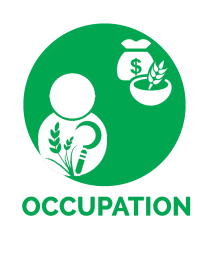
The people of the village Mostly rely on agriculture and forest ,but some are Self-employed, Teachers ,Mason and Govt servant for their everyday livelihood and economic status
Drinking Water: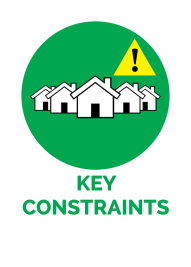
They face challenges and difficulty when it comes to drinking water because most of the Hamlets do not have access to drinking water due to less water sources in the village. Sohkyrbam Domphlang has the least sources of water they really facing challenges within the village they have to fetch water from far places,
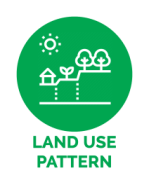
Jhum cultivation: mainly take up traditional approaches of cultivation like Jhum or the shifting cultivation
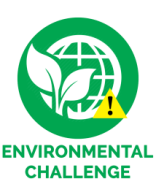
WATER BODIES
LAND:577.50
Forest:194.65 Ha
Culturable land:26.04 Ha
Spring – 3
Stream – 3
River – 1
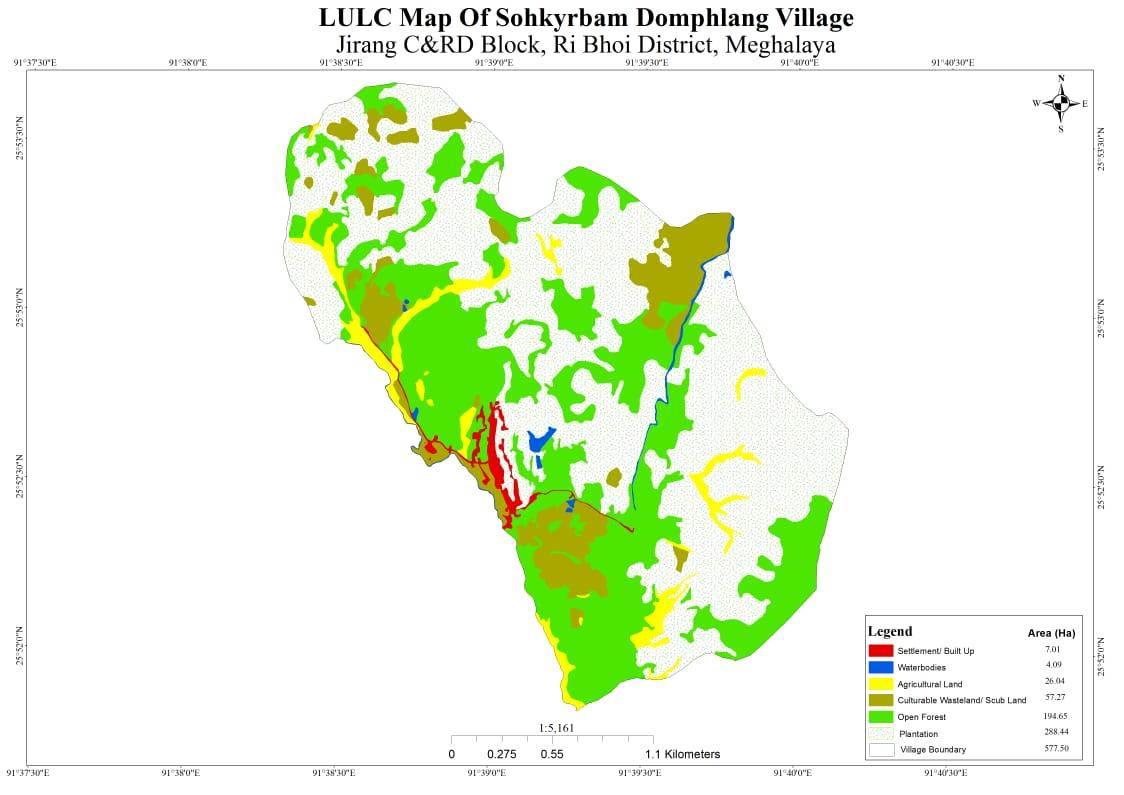
1.GroundTruthing
Dated: 4th of January 2019
The CLLMP team met with the headman of the village on the 14th of January 2019. He provided the team with important information regarding the current scenario of the landscape and the natural resource management under his chairmanship.
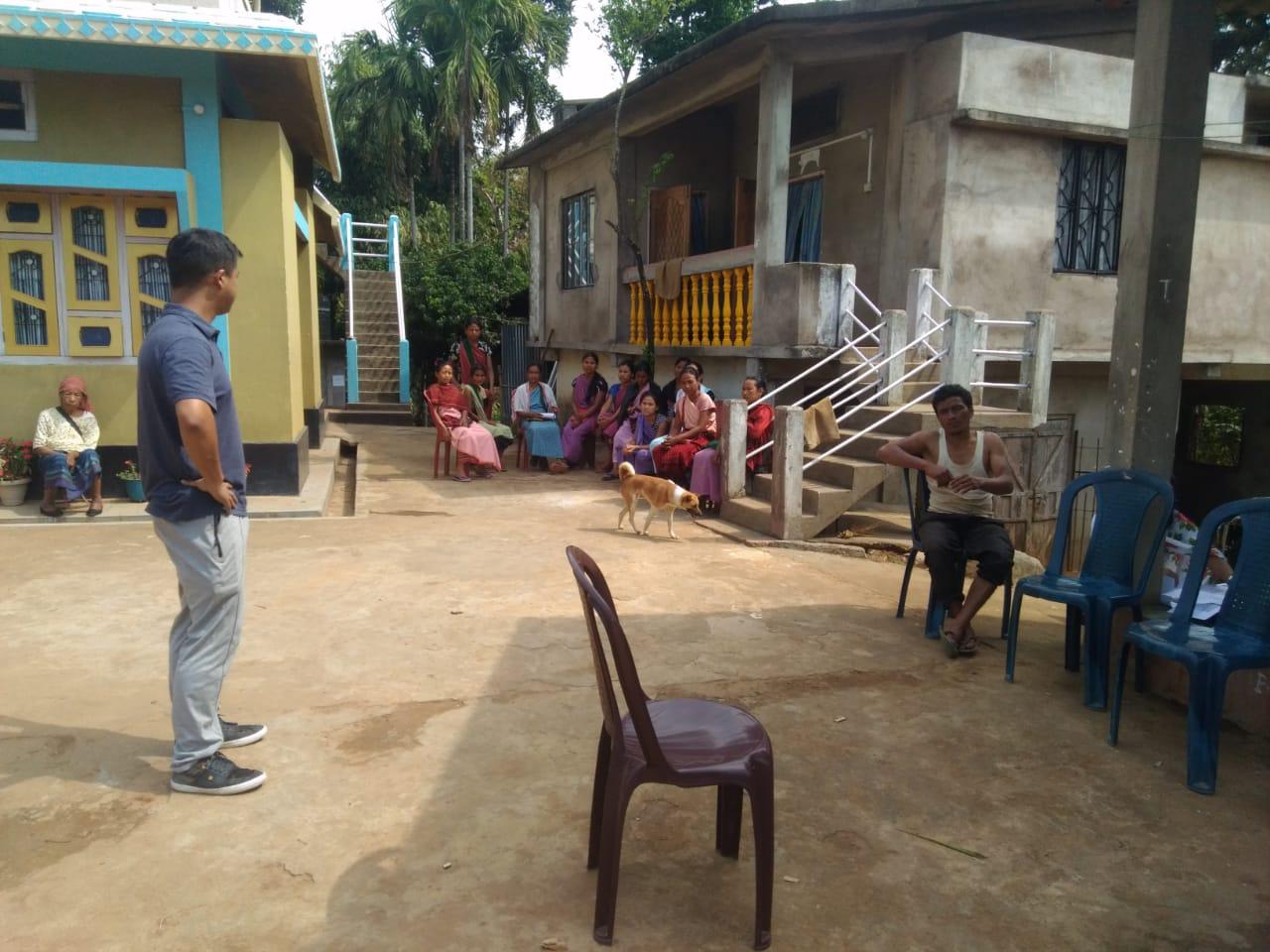
Case Findings
1. More than 101HH out of which 82 HH fall under the BPL category
2. Presence of Community land. There is 1 acre of forest and paddy field and 3 more acres of forest cover. 3. Almost 10 acres of cultivated land does not have proper irrigation.
4. There is scarcity of water, however there are 3 underdeveloped water drinking sources that can be utilized.
Sensitization Programme
Dated: 14th of January 2019
The District Project Manager and the Assistant Managers held a village Level sensitization Programme on the Community Led Landscape Management project on the 14th of january 2019.The villagers actively participated in the program, voicing out their concerns and questions regarding the project making it a huge success.
The CLLMP officials gave a brief introduction on Meghalaya Basin Management Agency (MBMA) and elucidated about the various programmes and projects that MBMA is working on, they then gave a detailed introduction on the Community led Landscape Management Project (CLLMP) and the different aspects and procedures that the villagers and the CLLMP team should carry out during the course of the project and the importance of the involvement of the community for the CLLM-Project to be a success. They gave due importance to the environmental aspects of the project and enlightened them on the various benefits that the villagers could obtain from the project.
The Program was followed by an interactive session to answer the doubts and questions of the villagers.
2.2 Signing of Documents:
After the interactive session, the village signed the Expression of Interest (EOI), the Village Grant Agreement (VGA) and the Citizen’s Green charter on the same day.


2.3 Formation of the VNRMC
The Formation of the Village Natural Resource Management Committee was done in a public meeting in the presence of the entire village and the CLLMP staffs. The community itself chose the President, the Secretary and the other executive members of the Committee.
Listed below are the members of the VNRMC:
|
||||||||||
|---|---|---|---|---|---|---|---|---|---|---|
|
Name in Full | Designation | Gender M/F | Age (Yrs) | Education | Occupation | Community | Religion and Denomination | Contact No and email address |
|
|
Devinestar Sohkhwai | Chairman | M | 36 | B.A | Govt. Servant | Khasi | Christian | 8787718618 | |
|
Graceful Nongrum | Secretary | F | 38 | IX | Self employed | Khasi | Christian | 9366997808 | |
|
IviniSohkhwai | Book keeper | F | 22 | XII | Self employed | Khasi | Christian | 9366759160 | |
|
WesterwellDoloi | Member | M | 49 | X | Govt. Servant | Khasi | Christian | 6003983931 | |
|
AilinaNongrum | Member | F | 48 | VIII | Asha | Khasi | Christian | 6009944858 | |
|
ShentimaiMawiong | Member | F | 58 | VIII | Self employed | Khasi | Christian | 6009804156 | |
|
GemilaNongkling | Member | F | 52 | IX | Self employed | Khasi | Christian | NA | |
| SodrenLapang | Member | M | 60 | VI | Self employed | Khasi | Christian | NA | ||
| PiosThangkiew | Member | M | 51 | IX | Self employed | Khasi | Christian | NA | ||
| Village Community Facilitators | |||||||||
|---|---|---|---|---|---|---|---|---|---|
| Name | Gender | Age | Education | Contact Number | Role | ||||
| Mishorly Sohkhwai | F | 21 | XII | 9863198255 | Social management | ||||
| Kharlin Namsaw | M | 22 | X | 6009476278 | NRM | ||||
| Robies Namsaw | M | 27 | XII | 8787370544 | Knowledge management | ||||
| Purchase Committee | |||||||||
| Sl.No. | Name | Gender | Contact Number | ||||||
| 1 | DonborSohkhwai | M | 9366415996 | ||||||
| 2 | BrilinsonThangkiew | M | 9366756919 | ||||||
| 3 | AisotKharthangmaw | F | NA | ||||||
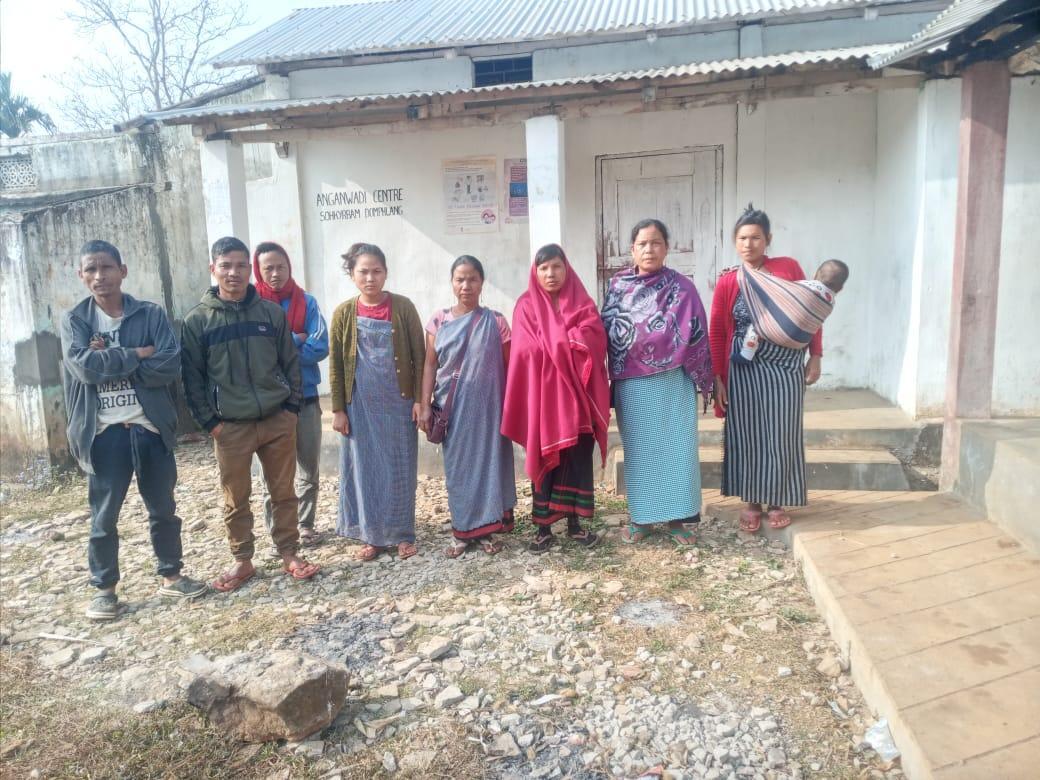
Figure -: The Village Natural Resource Management Committee

Figure-: The Village Community Facilitator
3. Opening of a Bank Account.
The opening of the bank account was initiated after the village signed the EOI (Expression of Interest), the VGA (Village Grant Agreement) and the Green Charter. Mr. B. Rumnong along with the Accountant of the RiBhoi CLLMP team trained the Purchasing and Procurement Committee of RiBhoi District on matters relating to Accounts and Bookkeeping on the 1st of July 2019.

Training on Accounts and Book-Keeping
PRA Exercise
The PRA exercise aims to incorporate the knowledge and opinions of the community in the planning and management of development projects and programmes. PRA exercise at Sohkyrbam Domphlang Village took place on the 19th of March 2019. There were a total of 85 community members who participated in this exercise
Activity 1-: Drawing of resource Map.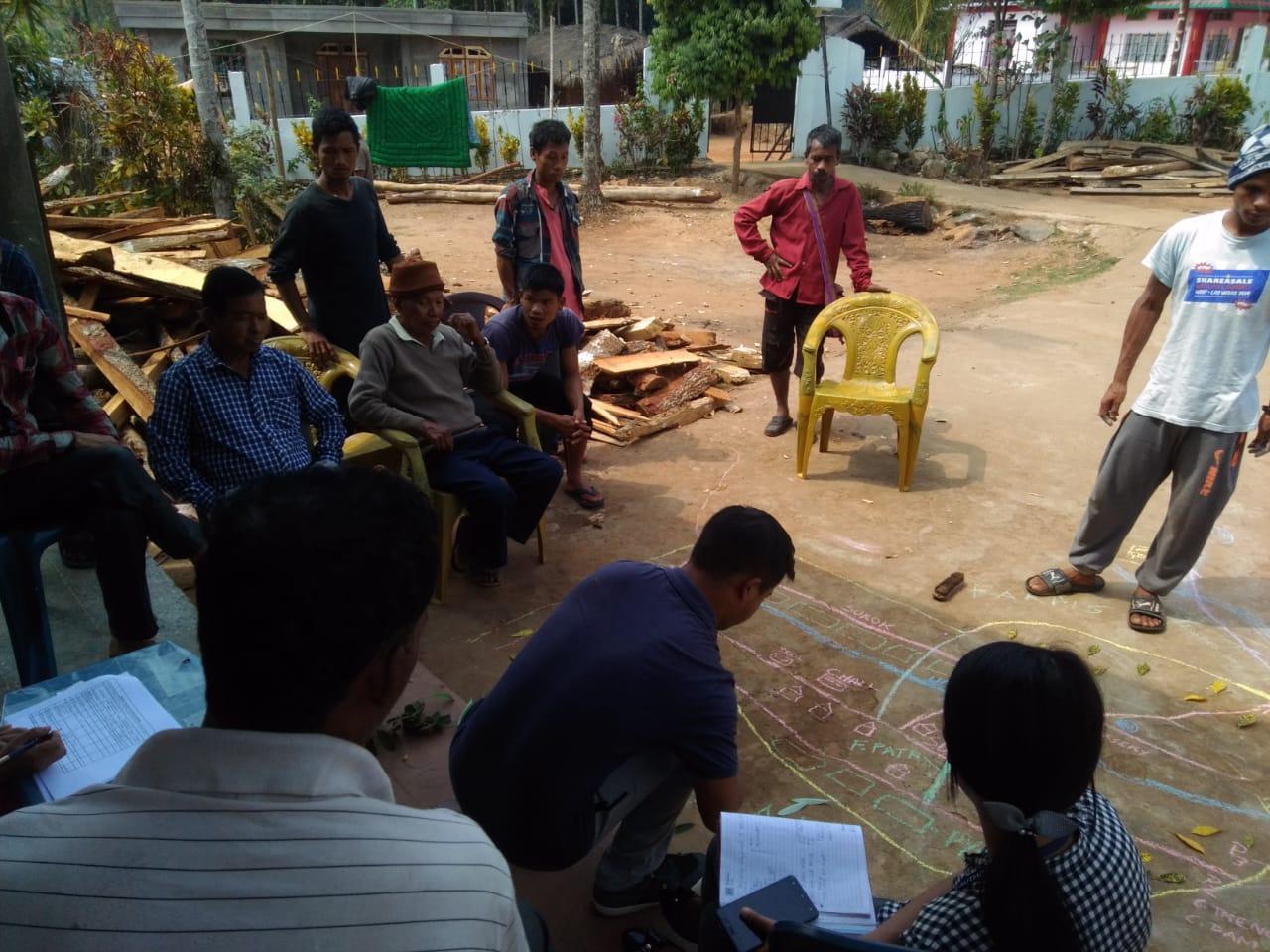


RESOURCE MAP ANALYSIS
Main agriculture produce is Paddy and Broom Grass
There are 2 types of Forest ownership: Community, Private
1 community forest
5 private forest
Most of the forest area belongs to private lands.
3 springs are present in the village and need to be developed and taken care of properly.
One River running through the paddy field.
One check dam is present in Nengsnong stream.
One main river flows through the paddy field and 3 small streams flow from spring origin which provide water to the community.
Three water tanks are available and two check dams are available.
barren land where both community and private own it.
Seven dugout ponds for fisheries one belong to the community and six belong to private.
Four Wells are present
Road: One main road to enter and exit from the village and small roads and footpaths connect to the main road.
Habitation are crowded and houses are built next to one another.
There is only one Presbyterian church in the village.
Jhum cultivation is common.
Activity 2-: Baseline Data collection to fill the Social Template and Environment Template
During the PRA Exercise the EE SM along with the community members sit together to have a brief discussion on the problems and challenges faced by the women in the village. Discussions and consultations with social groups existing in the village was held to gather basic village information regarding no. of households, demographic information, major crops and enterprises taken in the village, trends of production and productivity of major crops in the village and demographic distribution of village population and also group discussion on problems and challenges faced by the community in the village.
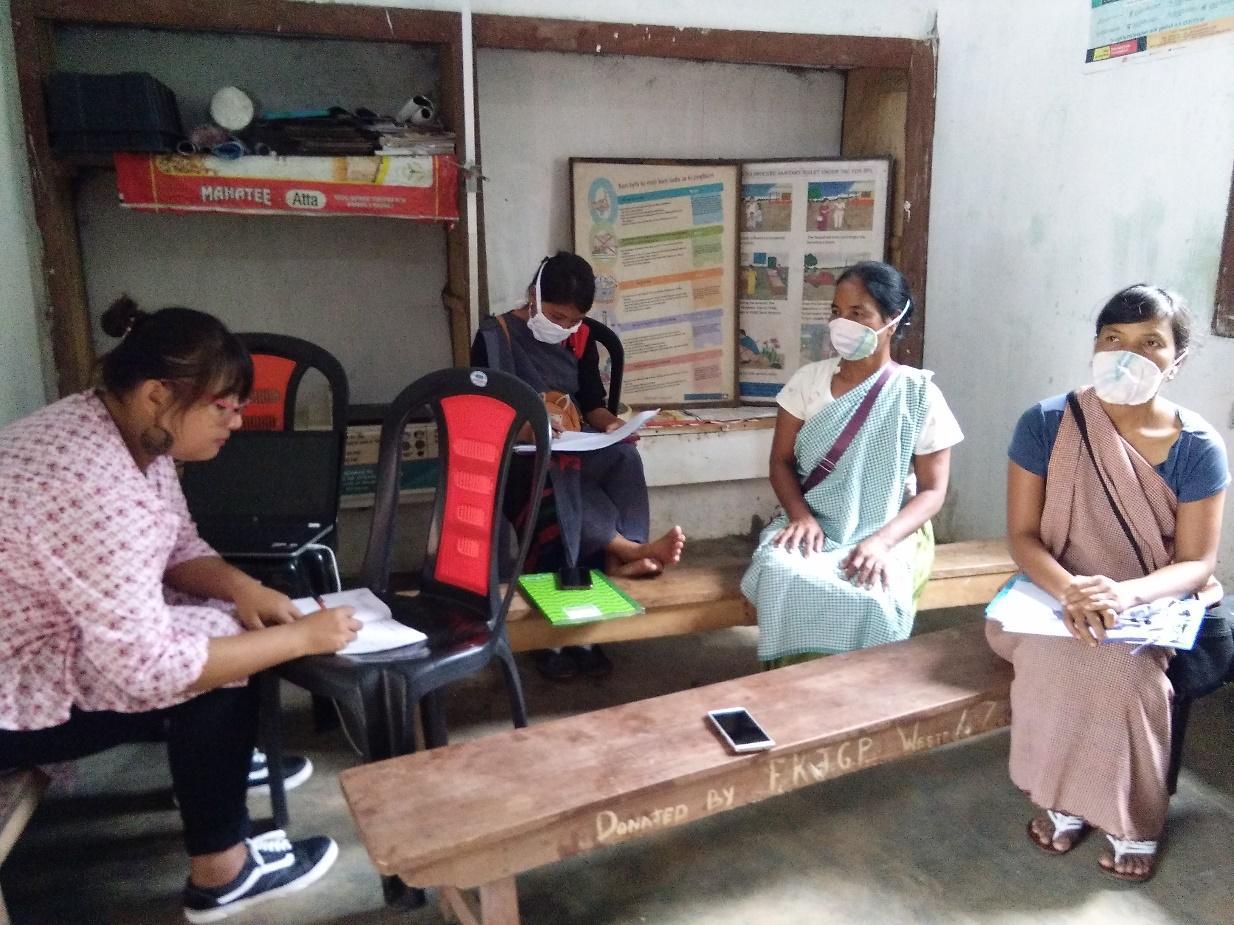
Figure -: EE Social Management and Community Member
Activity 3-: Problem Analysis
A. Do people have sufficient access to supply of fodder ,fuel wood, leaf litter?
Access to fodder and leaf litter they don’t have any problem they can access easily but in regards to fuel wood it's difficult for them to access because there is no community forest in the village they are all of private forest so whenever they are in need of fuelwood they have to get permission first from the forest owner and its not sufficient they also have to buy it from outside .
B. Has access to timber improved or reduced over the years? How is access for household use and commercial use managed?
Timber has been reduced year by year and they also have to buy from outside whenever they need for house construction .
C. Are the Water bodies facing any threats?
Yes there is one spring which causes threats to the villagers. The name of that spring is um-ir-u-shai. Due to its high acidic taste the water is sour and three people who have access to this spring fall socks and from that incident only people became aware of that particular spring.
D. Do all the people in the village have access to drinking water? What are the challenges?
They face a lot of difficulty when it comes to drinking water because the PHE water is available in the village but it’s not regular and also there are very few water sources in the village so the whole village they are facing a lot of challenges when accessing drinking water.
The reason for the challenges is that there is no proper water source and less water tank in the village so people face difficulty to get water.
E. Are there degraded areas in the village (open/degraded forests , mining affected ,high soil erosion etc)?
Yes, Open forest
F. What has caused this degradation ? Are there practices causing threats to availability and access to natural resources ?
Due to most of the land belonging to private ownership, large-scale cutting down of trees led to lower discharge of streams and springs. NO
What have been the changes in agricultural practices?
They are still practicing Jhum Cultivation , Paddy fields and now the people have started to grow cash crops like ginger, betelnut , Broom etc so that they could improve their livelihood and economic status .
Are there any challenges in farming?
Yes they face a lot of challenges especially wild animals who come and destroy all their paddy fields and also they face difficulty in the irrigation system because there is no proper water canal and Dam for irrigation.
And also the fruits are destroyed by some insects which causes a great loss to them and could not sell anymore because of the damage.
Low soil fertility has also led to decrease in crop production.
How would you consider the health situation in your village?
The health situation in the village has been improved over the years. People are aware of the cleanliness and sanitation so it’s a good way to a healthy lifestyle .
The last case of T.B in the village is 2015-2018 where there are 4 no’s of people who are infected by Malaria 3 of them are cured and 1 is dead .
Mostly the infants used to suffer from cough, diarrhoea during the summer seasons.
The ASHA plays a very vital role in giving care and supplements to the pregnant women and to infants; they also sometimes give awareness programmes within the village.
How is the situation of cleanliness , sanitation access to toilets and waste management ?
The cleanliness , sanitation and waste management is well maintain by the village members, women's group and youth group and since the Swachh Bharat Mission has come into force the village council has taken the initiative to improve the cleanliness in the village and some of the peoples of the village has access to Toilets through the Swachh Bharat mission scheme for Toilets.
Who is the most vulnerable group in the village? What can be done to improve their lives?
BPL Families . Inclusion of BPL Families during project implementation.
What are the livelihood aspirations of the youth ? Are there any avenues available?
The majority of the people in the village turn to farming and job cards under MGNREGA for employment and also they engage in self-employment to earn and to improve their livelihood.
Do any committees /institutes/rules exist to manage and monitor natural resources in the village?
The VNRMC under the CLLMP manage the Natural resources in the village . prior to the CLLMP the village from the forest management committee to look after and preservation of the forest.
What are some of the major issues or conflicts in the village?
Till the present days the people of the village have no conflict or issues within or outside the village they live in peace and harmony.
Have any of the above issues been discussed in village meetings?
If there are any issues or conflicts within the village the Durbar village executive committee will solve the issues and address the Problems.
How do people resolve disagreements and conflicts?
All disagreements and conflicts are addressed by the traditional institution of village governance called the village Durbar.
Activity 4: Seasonality calendar
The EE Social Management also mapped the seasonal calendar of
SohkyrbamDomphlang Village to help identify heavy workload periods,
periods of relative ease, credit crunch, diseases, food security,
wage availability , festive season etc. This will prove helpful in
project planning and project timeline framing.
Participants:
Shri DivinestarSohkhwai - VNRMC Member
Smt MishorlySohkhwai -Village Community Facilitator
Smt GracefullNongrum -VNRMC Member
SmtAilinaNongrum -VNRMC Member
Shri KharlinNamsaw - Community Member
| SEASONAL CALENDAR | |||||||||||||
|---|---|---|---|---|---|---|---|---|---|---|---|---|---|
| Sl No. | CRITERIA | JAN | FEB | MAR | APRL | MAY | JUNE | JULY | AUG | SEP | OCT | NOV | DEC |
| 1 | Water Scarcity | 1 | 1 | 1 | 3 | 3 | 3 | 2 | |||||
| 2 | Prone to sickness | 3 | 1 | 1 | 1 | 1 | 2 | 2 | 3 | ||||
| 3 | Seeking job outside | 1 | 1 | 1 | 1 | 1 | |||||||
| 4 | Rain Fall | 2 | 1 | 1 | 1 | 2 | |||||||
| 5 | Free – Less work | 1 | 1 | 1 | |||||||||
| 6 | Paddy Cultivation | 1 | 1 | ||||||||||
| 7 | Paddy harvesting | 1 | 1 | ||||||||||
| 8 | Ginger cultivation | 1 | 1 | ||||||||||
| 9 | Ginger harvesting | 1 | 1 | ||||||||||
| 10 | Broom Cultivation | 1 | 1 | ||||||||||
| 11 | Broom Harvesting | 1 | 1 | 3 | |||||||||
| 12 | Betelnut Cultivation | 1 | 1 | ||||||||||
| 13 | Betelnut Harvesting | 1 | 1 | ||||||||||
| 14 | Tree Plantation | 1 | 1 | ||||||||||
| 15 | Vegetable (crop cultivation) | 1 | 1 | 1 | |||||||||
| 16 | Vegetable (crop harvesting) | 1 | 1 | ||||||||||
| 17 | Festive Season | 1 | 1 | ||||||||||
| 18 | Forest fire | 1 | 1 | 2 | |||||||||
| 19 | Collection of Fuel wood | 1 | 1 | 2 | |||||||||
| MAXIMUM | 1 |
|---|---|
| MODERATE | 2 |
| LESS | 3 |
5.CNRMP
The CNRM-Plan was prepared after a village level meeting was held in the community Hall of the village on the 8th of February 2019 with the help of the VNRMC members and the community as a whole. A total of men and women from the village were present to voice their problems and opinions before the plan was formulated.
Highlights of CNRMP:
Sohkyrbam Village wanted to prioritize their check dams as they are facing a serious problem of water supply. Two check dams have been introduced in the plan to counter their water shortage problem.
The CNRM Plan also included measures to check the management of waste in the village.
Apart from this, Mr Reuben Shabong ,the Assistant Manager for Environment Management found that there is an outstanding growth of Wild Orchids in the village and have encouraged the people to preserve them.
Even though the Wild Orchids thrive in these regions, there is an urgent need to preserve these plants as they fail to withstand habitat destruction pressures because of their habitat specificity and slow growth.
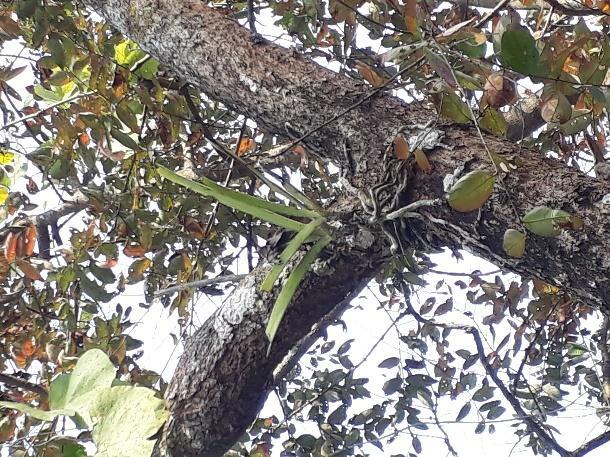
Activity : Baseline Data collection to fill the Environment Template
During the PRA exercise External Expert of Environment Management discussed information related to land use categories such as forest, cultivable land, water bodies ,etc. with a group consisting of village community members who are quite aware of the village boundary and the presence of natural resources in the village. Problems and challenges related to NRM were discussed. Scarcity of water and how to develop and take care of the springs and streams are discussed. Two check dams are proposed at Jakwang and Nengshnong since these are the two main sources of water for the village as a whole. The Village name ‘Sohkyrbam’ is taken from a tree name Sohkyrbam its scientific name is Dilleniaindica. But sadly only one to two remaining standing trees of this species are left. Other trees which are commercially valuable like Cinnamomumverum, Garciniapedunculata, Baccaureasapida, Sohdkhoh are also starting to decline from the village due to excessive timber collection and no measures to take care of these kinds of trees.
Participants:
Shri DivinestarSohkhwai - VNRMC Member
SmtMishorlySohkhwai -Village Community Facilitator
SmtGracefullNongrum -VNRMC Member
SmtAilinaNongrum -VNRMC Member
Shri KharlinNamsaw - Community Member
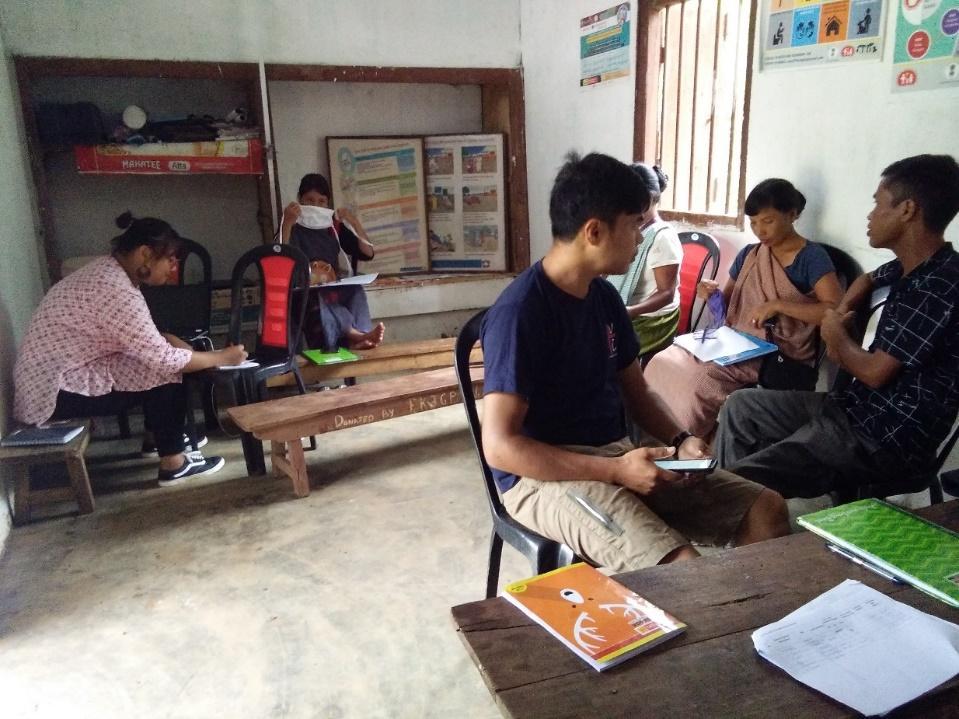
Fig: EE EM and community member
Submission of list of plans by the VNRMC
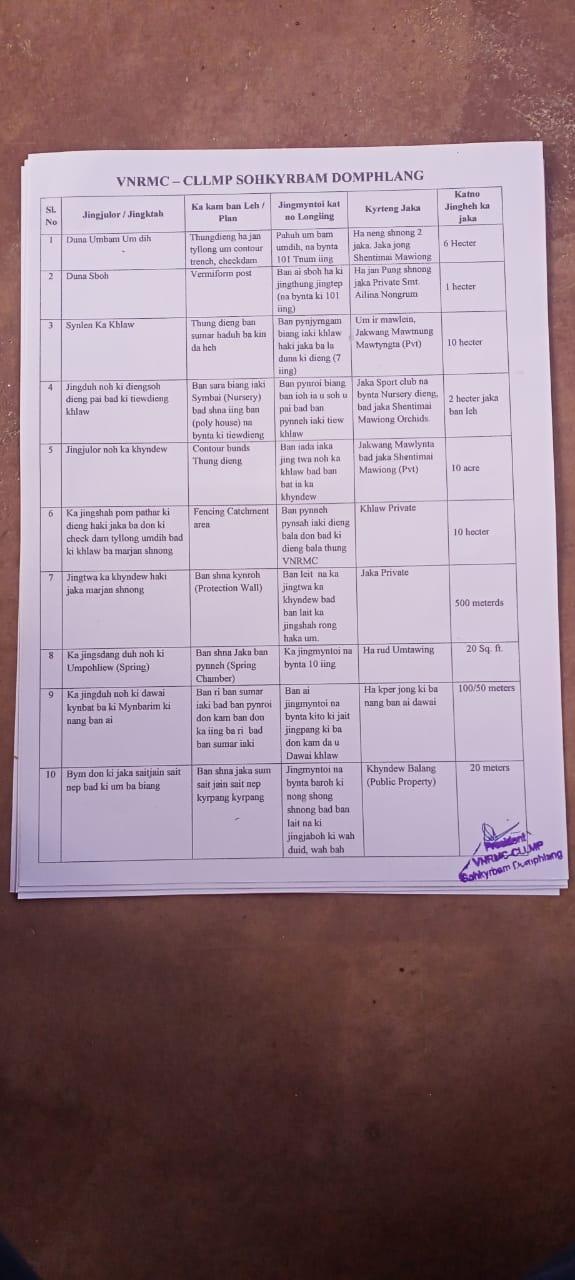
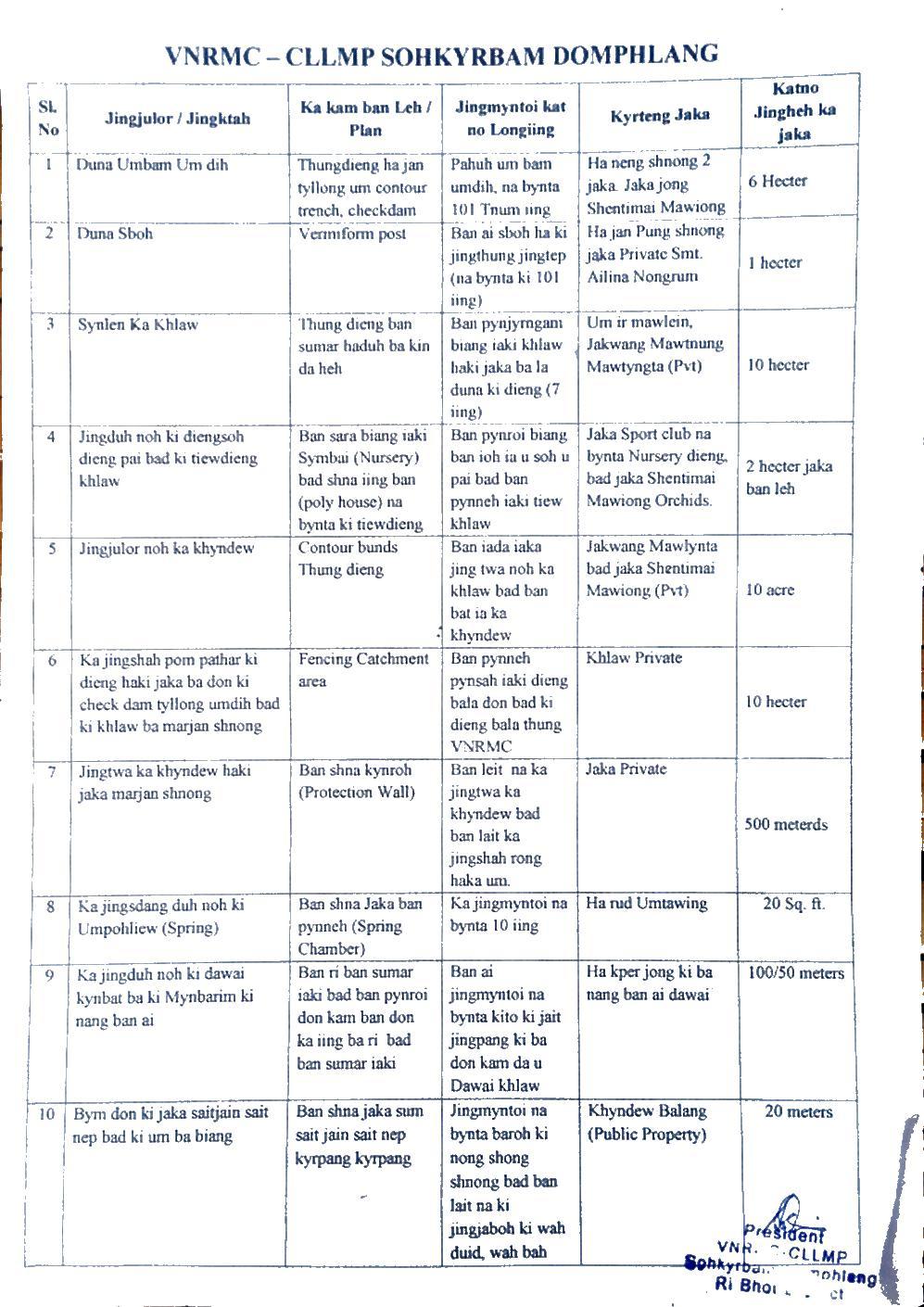
The Finalized Community Natural Resource Management Plan of SohkyrbamDomphlang Village.
|
Name of Proposed Interventions | Site |
|
Nos of HHs expected to Benefit | ||
|---|---|---|---|---|---|---|
|
|
|
||||
| 1 |
|
Near Palyground |
|
|
|
|
| 2 |
|
|
|
82 | 19 | 101 |
| 3 |
|
Near Pungshnong |
|
82 | 19 | 101 |
| 4 |
|
|
|
82 | 19 | 101 |
| 5 |
|
Nengshnong |
|
82 | 19 | 101 |
| 6 |
|
Near Madan Football |
|
82 | 19 | 101 |
| 7 |
|
|
|
82 | 19 | 101 |
|
|
82 | 19 | 101 | ||
| 8 |
|
Mawlyngta (near LumJyntep) |
|
82 | 19 | 101 |
| 9 |
|
At Orchid Nursery |
|
82 | 19 | 101 |
| 10 |
|
Jakwang |
|
82 | 19 | 101 |
| irmawlein |
|
82 | 19 | 101 | ||
| 11 |
|
Nengshnong |
|
82 | 19 | 101 |
| 12 |
|
Near Pungshnong |
|
82 | 19 | 101 |
| 13 |
|
Near Madan Football |
|
82 | 19 | 101 |
| 14 |
|
Mawlynta |
|
82 | 19 | 101 |
| 15 |
|
JakaBalang |
|
82 | 19 | 101 |
| 16 |
|
Near Madan Football |
|
82 | 19 | 101 |
| 17 |
|
|
|
82 | 19 | 101 |
| 18 |
|
|
|
82 | 19 | 101 |
| 19 |
|
Rangkasa |
|
82 | 19 | 101 |
| 20 |
|
HanengShnong |
|
25 | ||
| 21 |
|
Football Playground |
|
|||
| 22 |
|
Jan L.P skul |
|
|||
| 23 |
|
Nengshnong |
|
108 | ||
| 24 |
|
Nengshnong |
|
101 | ||
| 25 |
|
Jan PungShnong | 101 | |||
| 26 |
|
Umtawing | ||||
Project Implementation
| 1. | Type Of Intervention | Site Name | GPS Co-ordinates | Amount Sanctioned | Work Status | |
|---|---|---|---|---|---|---|
| Nursery | Kyndong Umtawieng | 25°52'36.22"N | 91°38'47.12"E | ₹ 1,19,300.00 | Completed | |

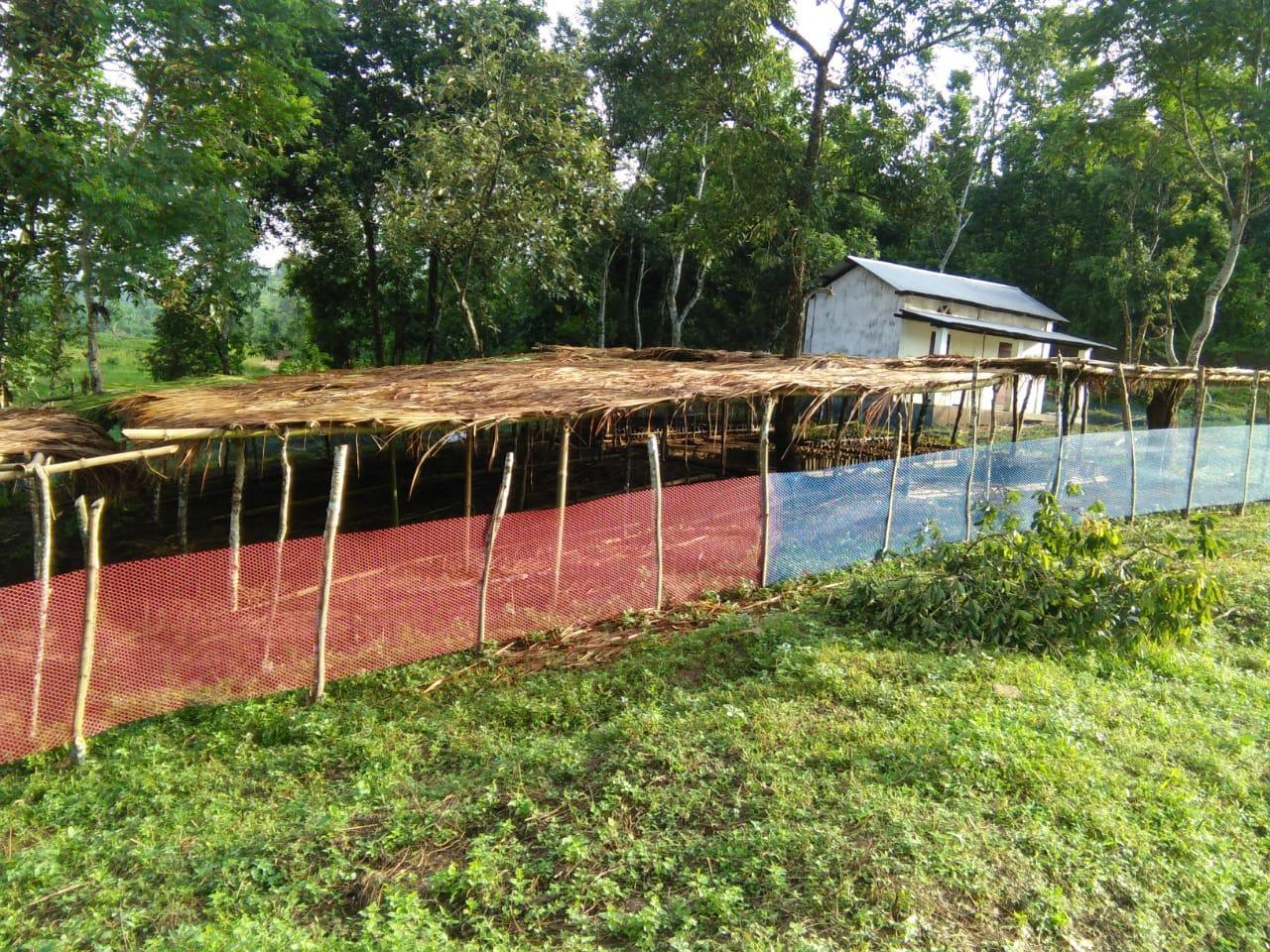
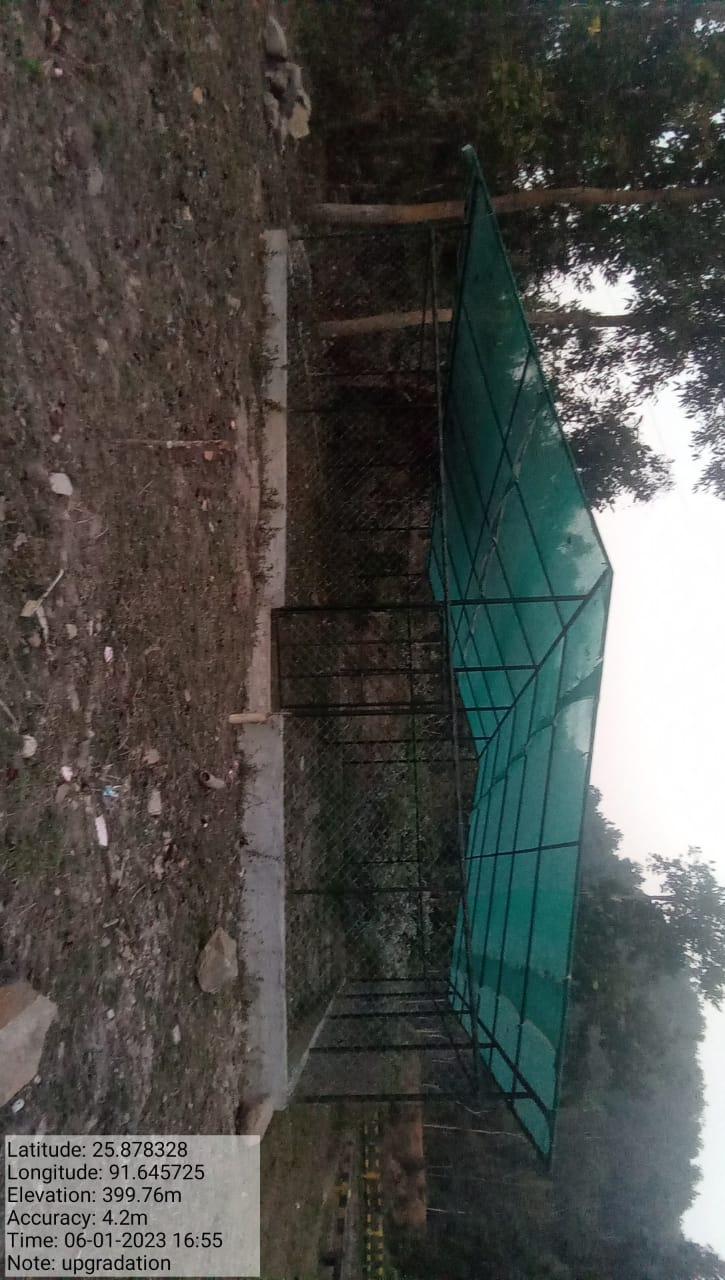
| 2. | Type Of Intervention | Site Name | GPS Co-ordinates | Amount Sanctioned | Work Status | |
|---|---|---|---|---|---|---|
| Contour trenches | Nengshong | 25.8859 N | 91.656562 E | ₹ 27,000.00 | Completed | |
| TangkasaJakwang | 25.8811 N | 91.6505 E | Completed | |||
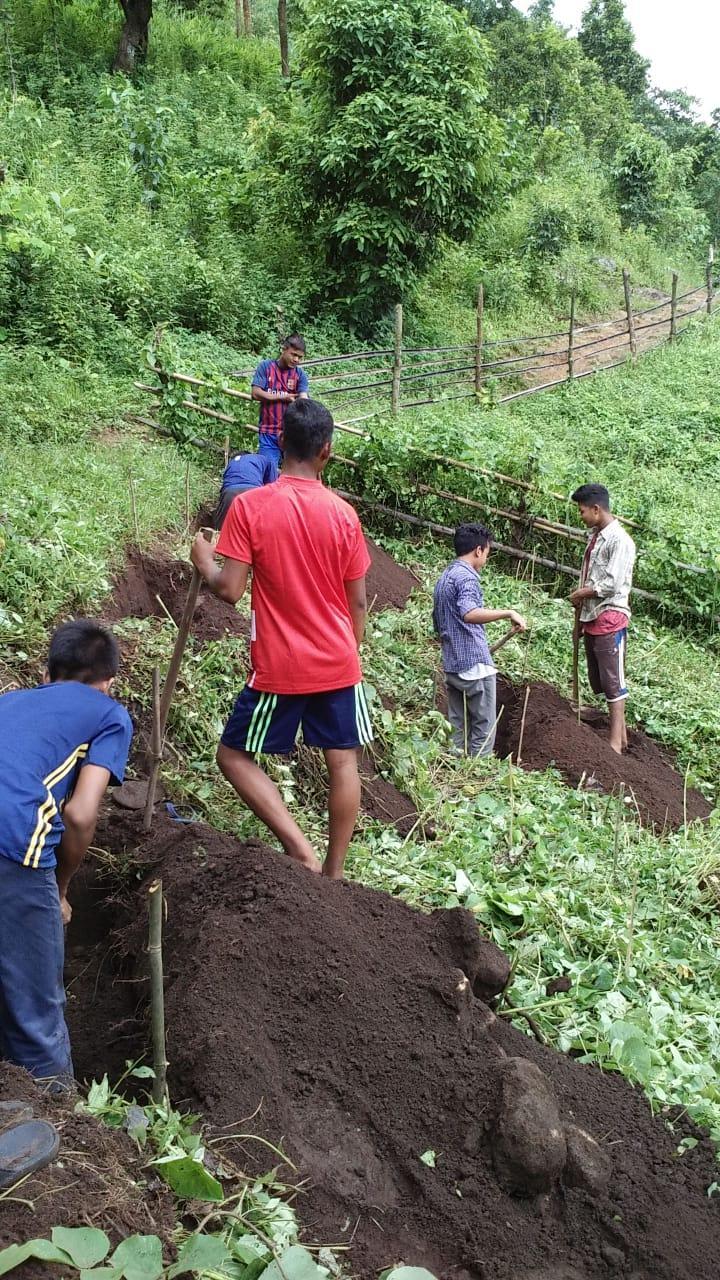
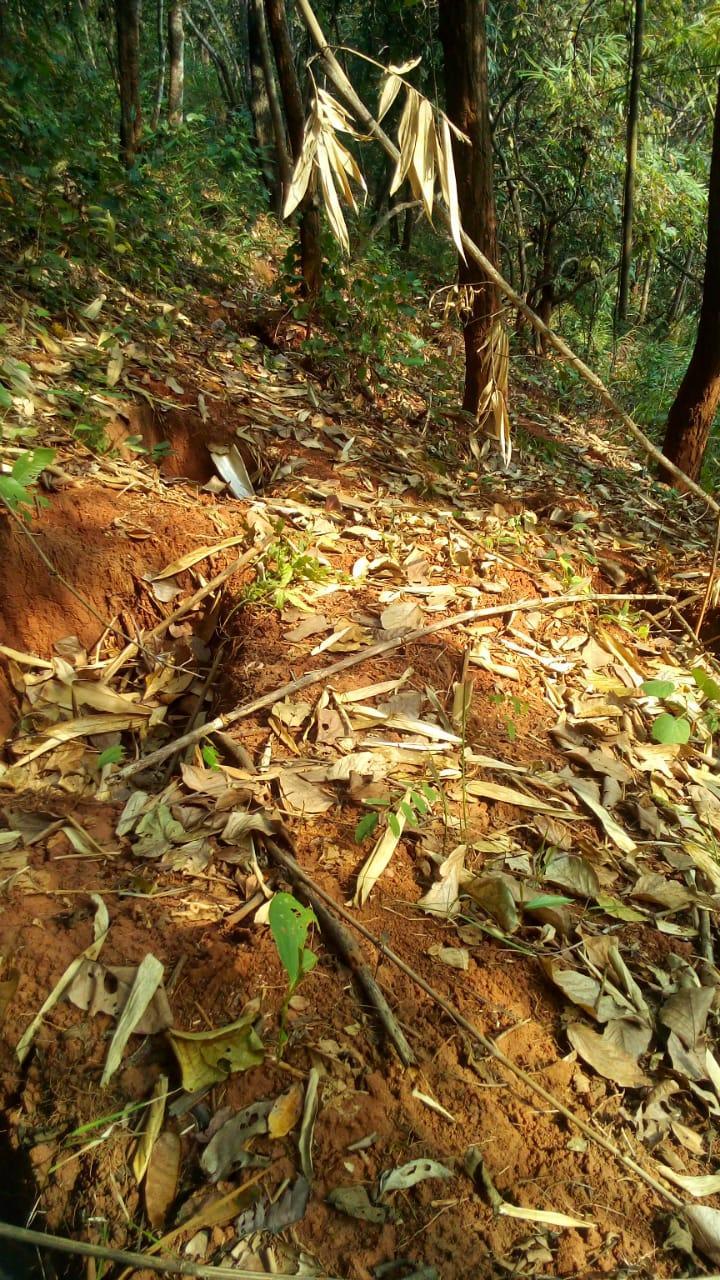
| 3. | Type Of Intervention | Site Name | GPS Co-ordinates | Amount Sanctioned | Work Status | |
|---|---|---|---|---|---|---|
Vermi-Compost& Fencing |
TangkasaJakwang | 25.87828 N | 91.645737 E | ₹ 2,22,000.00 ₹ 1,75,970.00 |
Completed | |
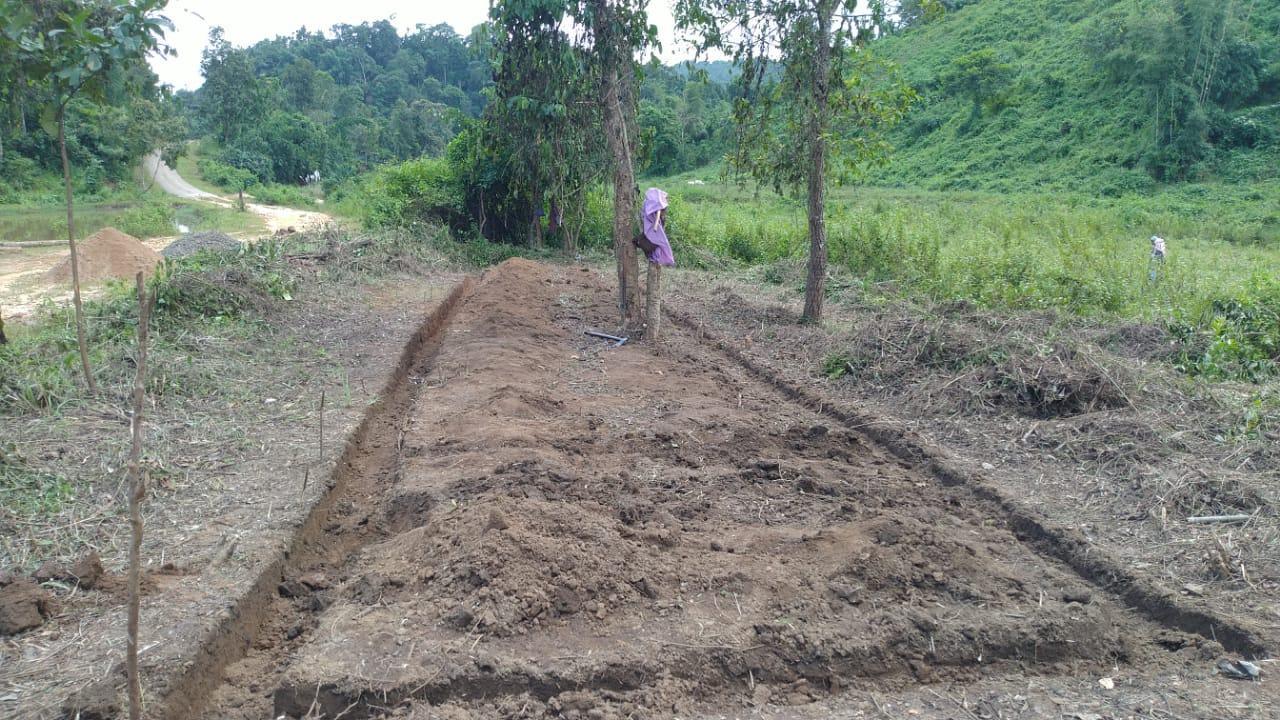
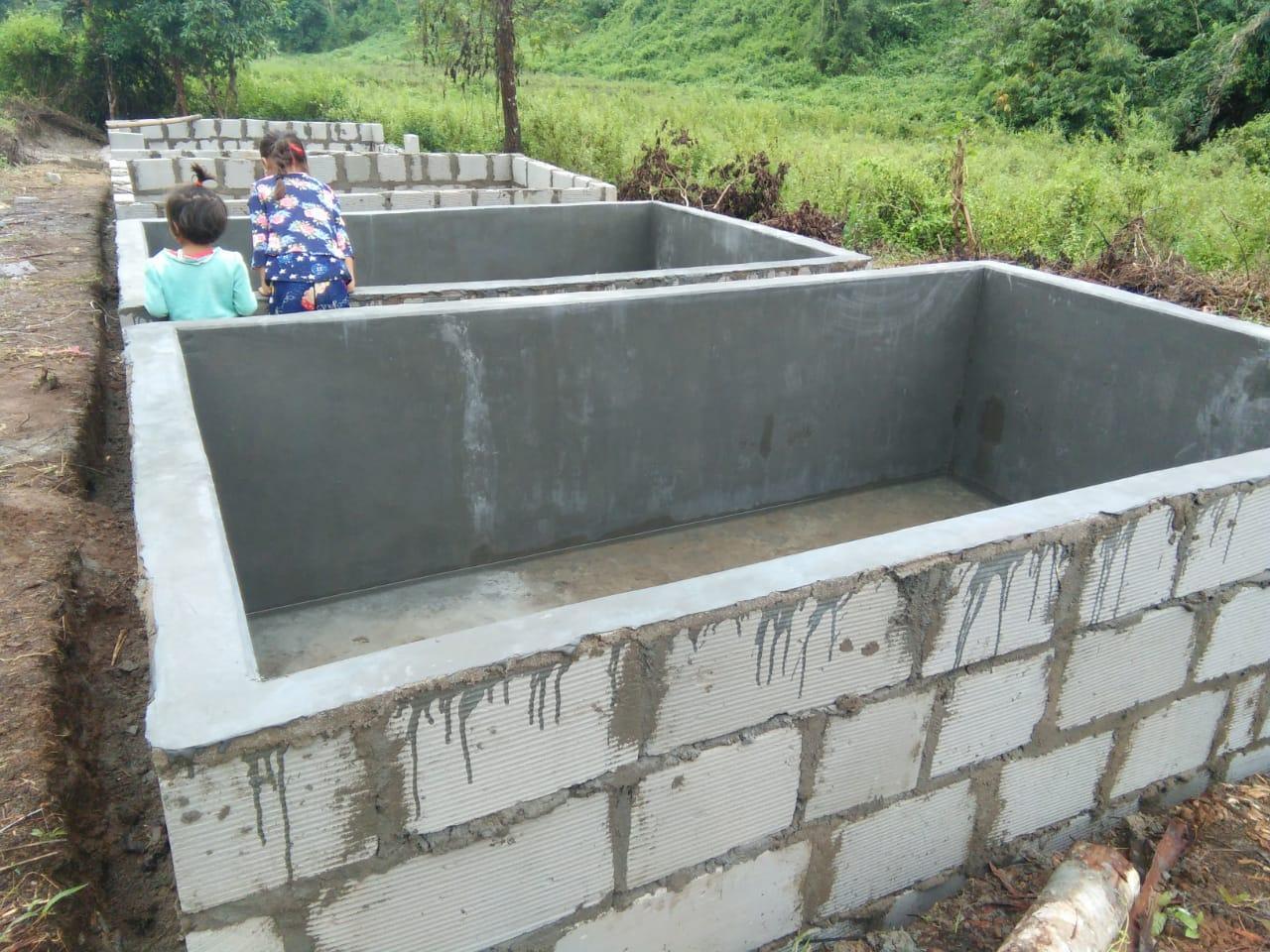

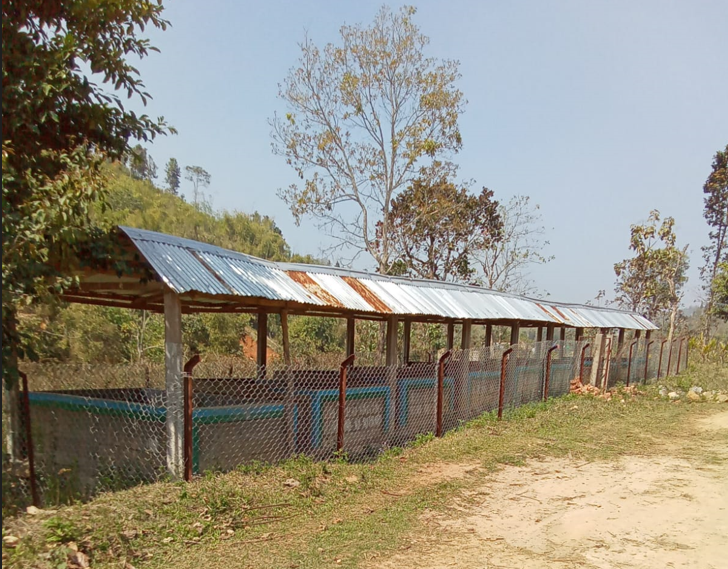
| 4. | Type Of Intervention | Site Name | GPS Co-ordinates | Amount Sanctioned | Work Status | |
|---|---|---|---|---|---|---|
| Poly House Orchid | Jan Madan Football | 25.876762 N | 91.647672 E | ₹ 1,03,200.00 | Completed | |
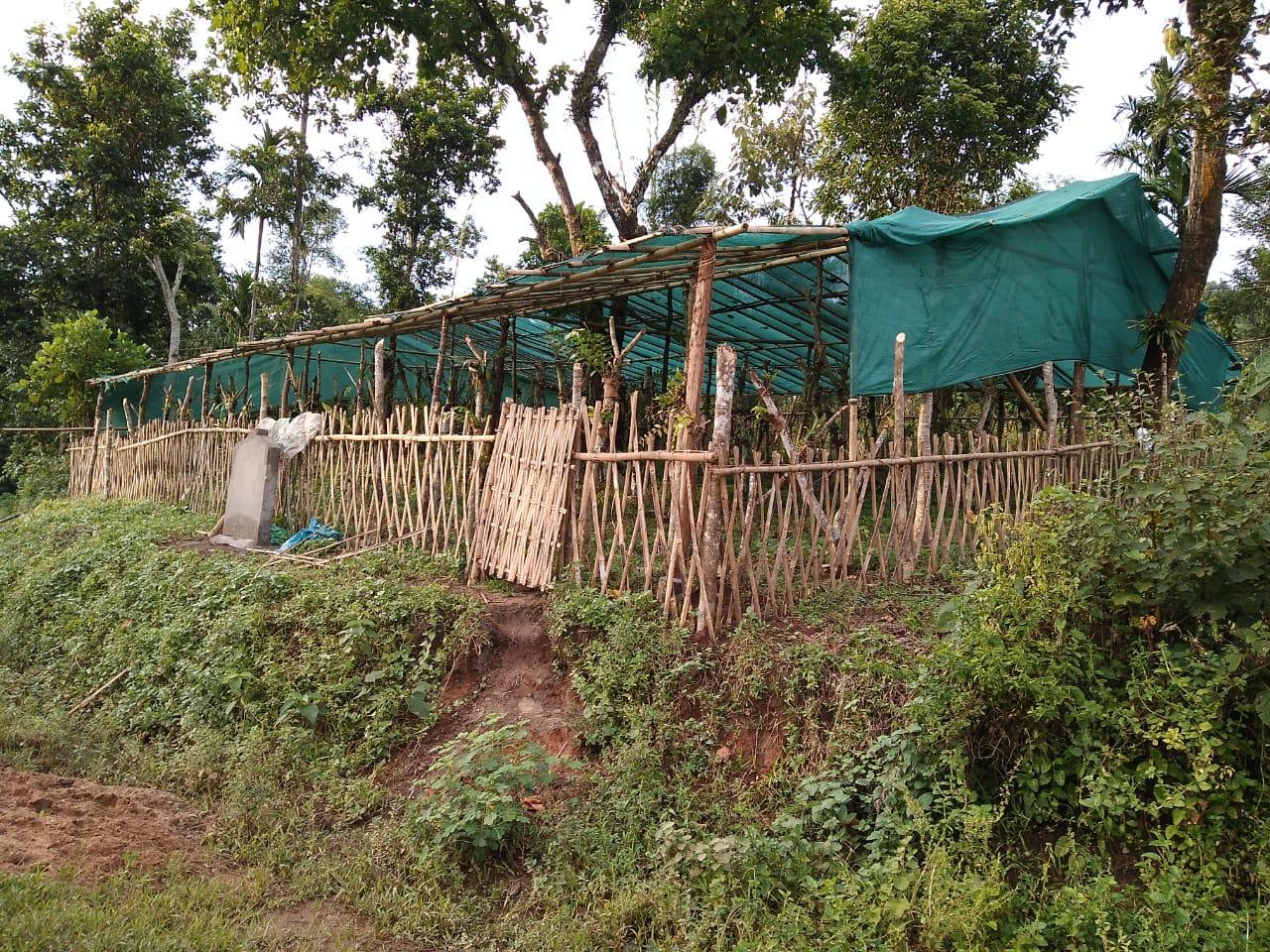

| 4. | Type Of Intervention | Site Name | GPS Co-ordinates | Amount Sanctioned | Work Status | |
|---|---|---|---|---|---|---|
| Afforestation | Ja kwang, Mawtnum, Mawlyngta | 25.883072 N | 91.643525 E | ₹ 4,73,100.00 | Completed | |
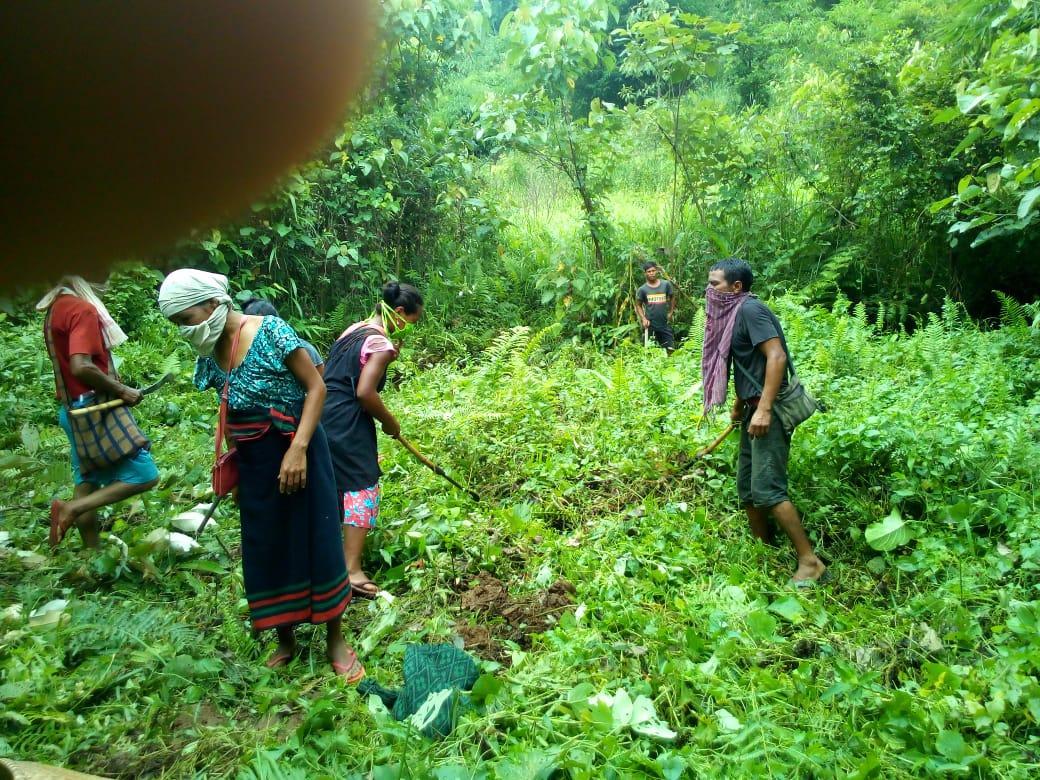
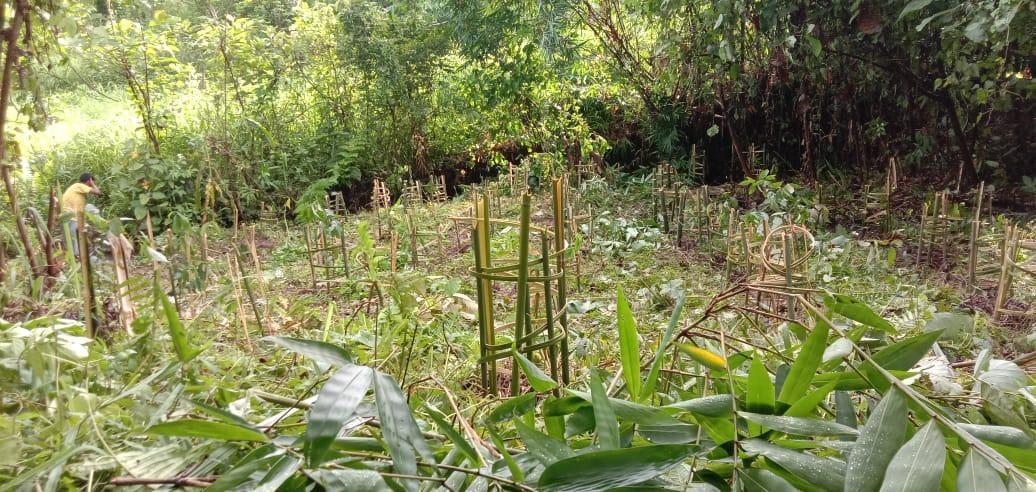
| 5. | Type Of Intervention | Site Name | GPS Co-ordinates | Amount Sanctioned | Work Status | |
|---|---|---|---|---|---|---|
| Bench Terracing | Nengshnong | 26° 0'25.86"N | 92° 5'13.06"E | ₹2,29,100.00 | Completed | |
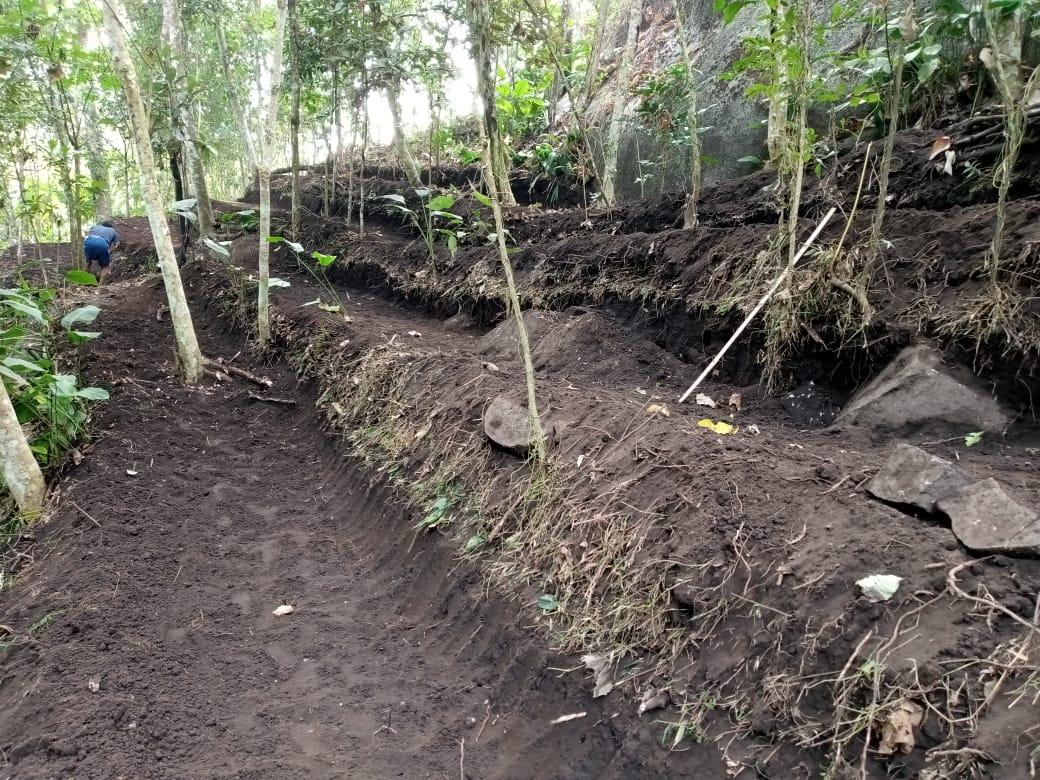
| 6. | Type Of Intervention | Site Name | GPS Co-ordinates | Amount Sanctioned | Work Status | |
|---|---|---|---|---|---|---|
| Fire control line | Mawlyngta | 26° 0'41.22"N | 92°4'46.86"E | ₹85,000.00 | Completed | |

| 7. | Type Of Intervention | Site Name | GPS Co-ordinates | Amount Sanctioned | Work Status | |
|---|---|---|---|---|---|---|
| Waste management Bin | Football play ground | 26° 0'25.86"N | 92° 5'13.06"E | ₹72,000.00 | Completed | |

| 8. | Type Of Intervention | Site Name | GPS Co-ordinates | Amount Sanctioned | Work Status | |
|---|---|---|---|---|---|---|
| Waste management Bin | L.P School | 26° 0'25.86"N | 92° 5'13.06"E | ₹48,000.00 | Completed | |
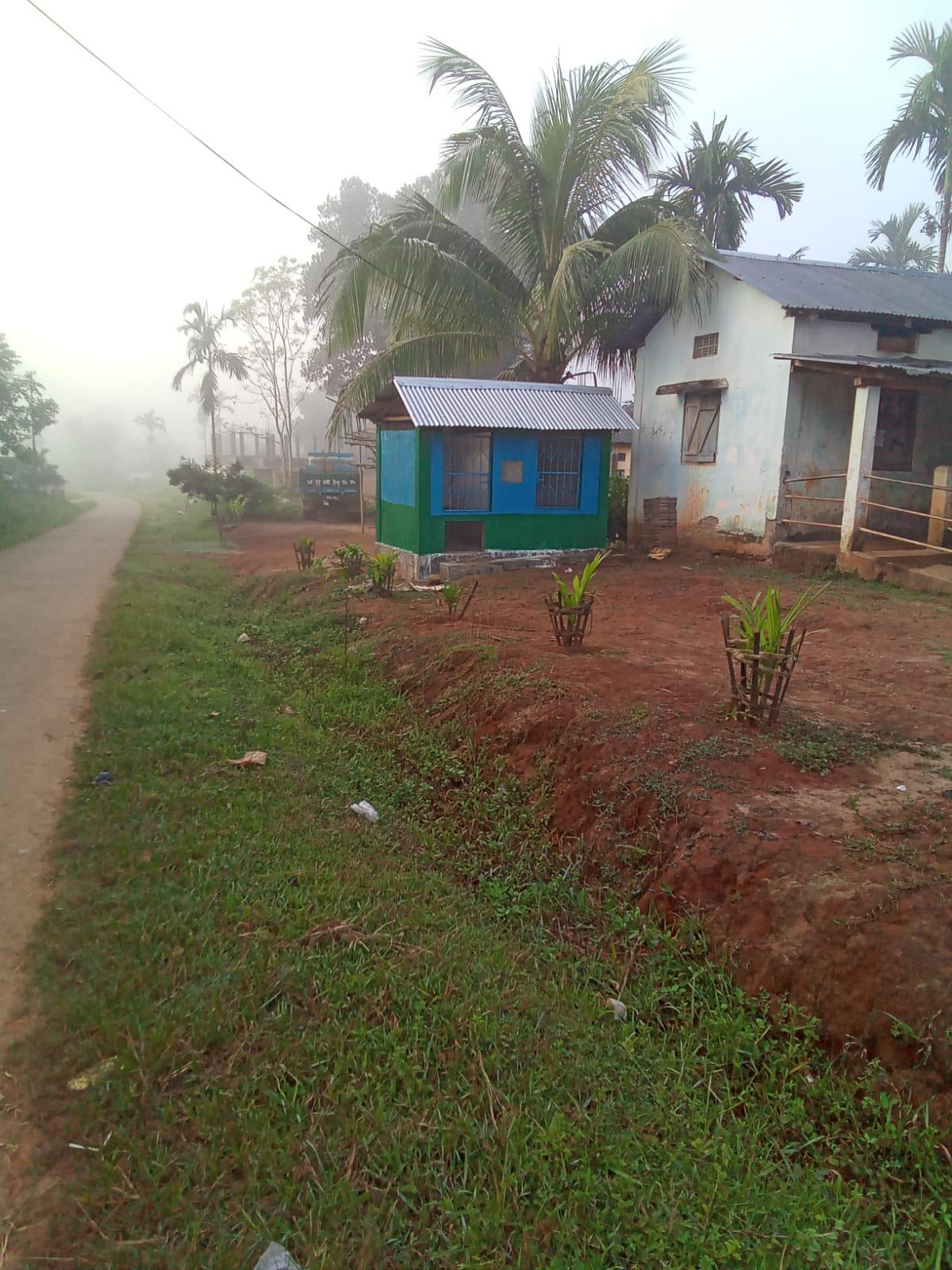
| 9. | Type Of Intervention | Site Name | GPS Co-ordinates | Amount Sanctioned | Work Status | |
|---|---|---|---|---|---|---|
| Agro Forestry | NengShnong | 26° 0'25.86"N | 92° 5'13.06"E | ₹38,386.00 | Completed | |
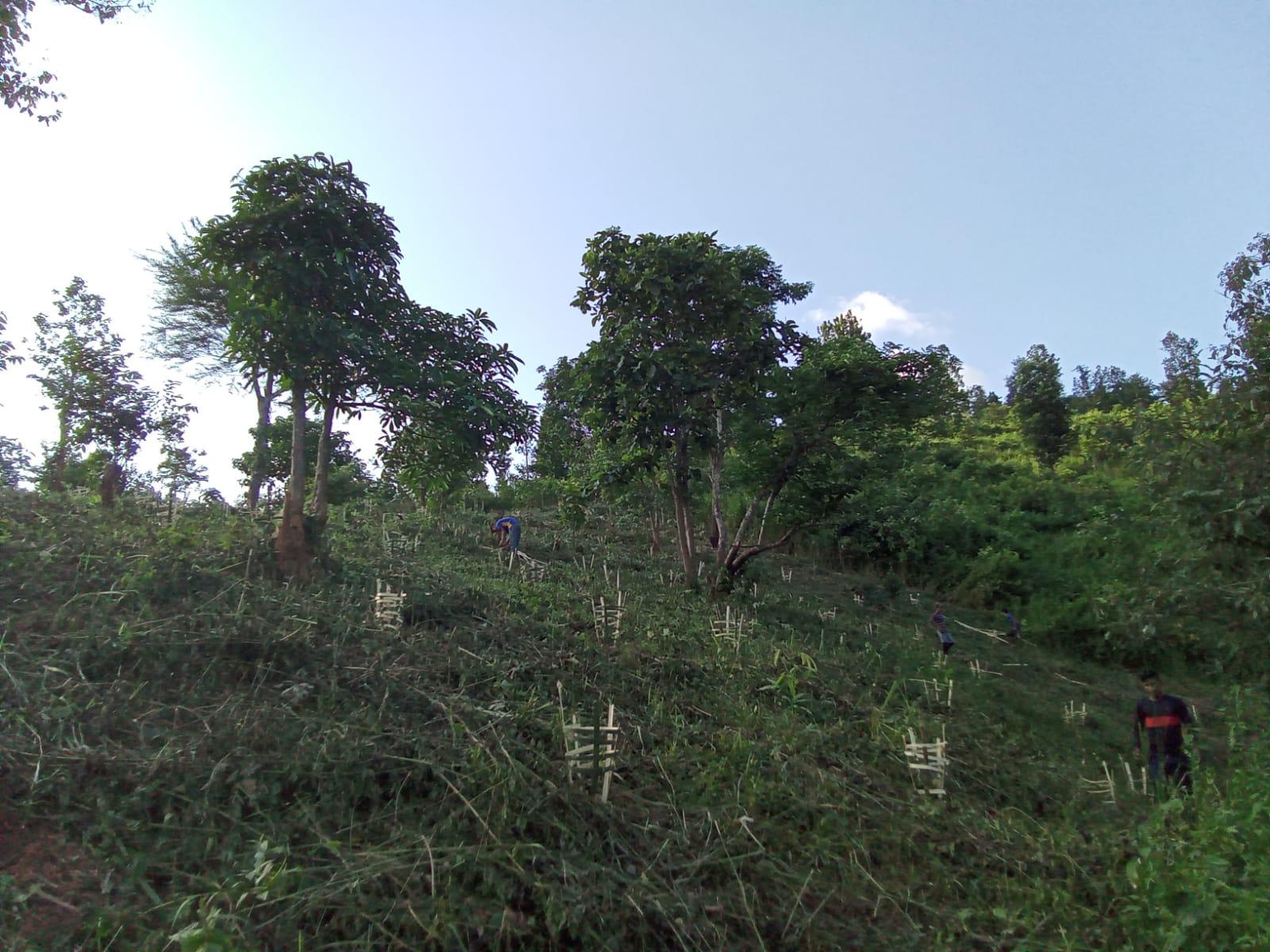
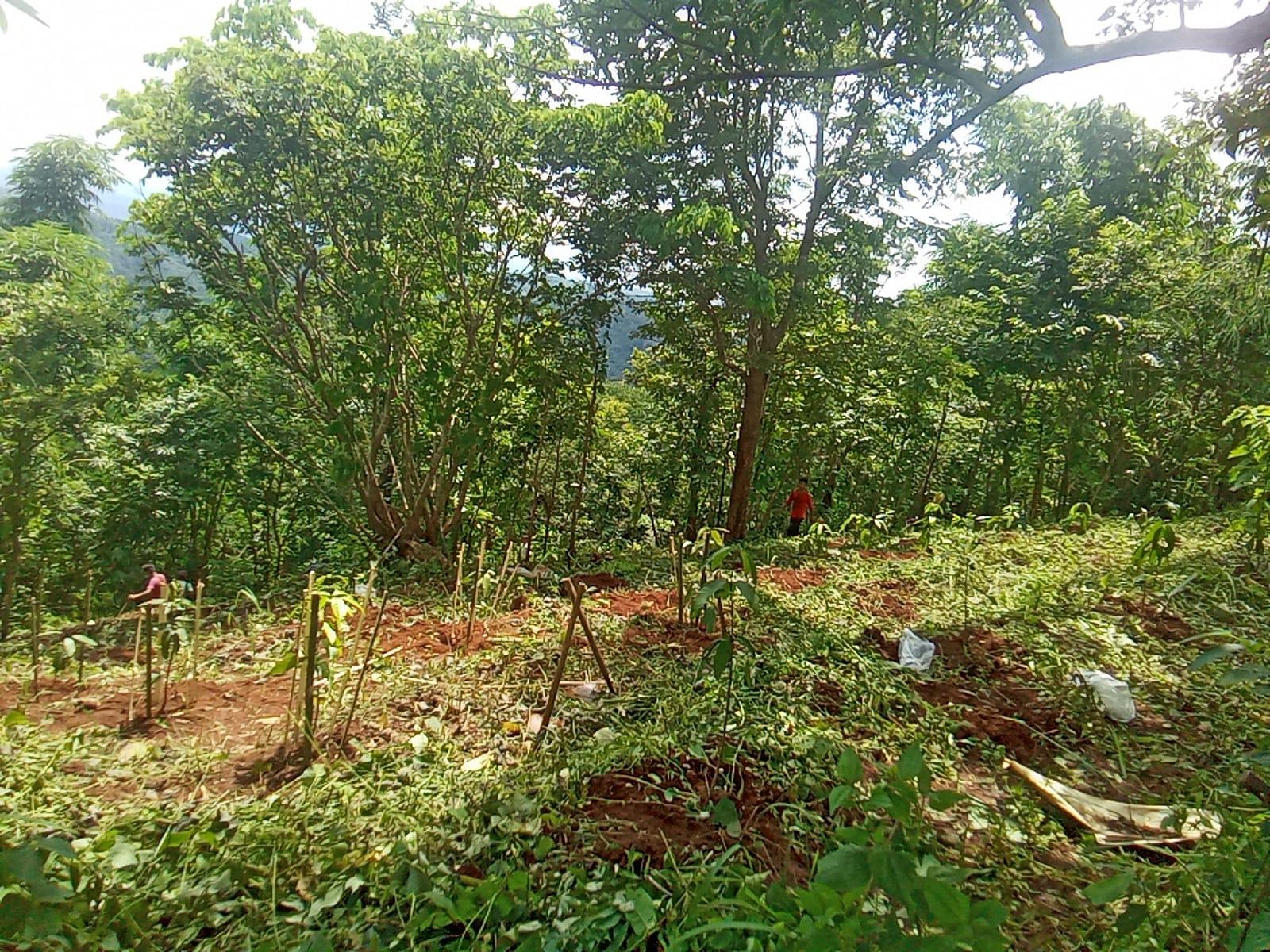
| 10. | Type Of Intervention | Site Name | GPS Co-ordinates | Amount Sanctioned | Work Status | |
|---|---|---|---|---|---|---|
| Gully Plug | NengShnong | 25.8808 N | 91.6496 E | ₹1,22,300.00 | Completed | |

| 11. | Type Of Intervention | Site Name | GPS Co-ordinates | Amount Sanctioned | Work Status | |
|---|---|---|---|---|---|---|
| Bench Terracing 2 | NengShnong | 25.8816 N | 91.6493 E | ₹3,59,844.00 | Completed | |
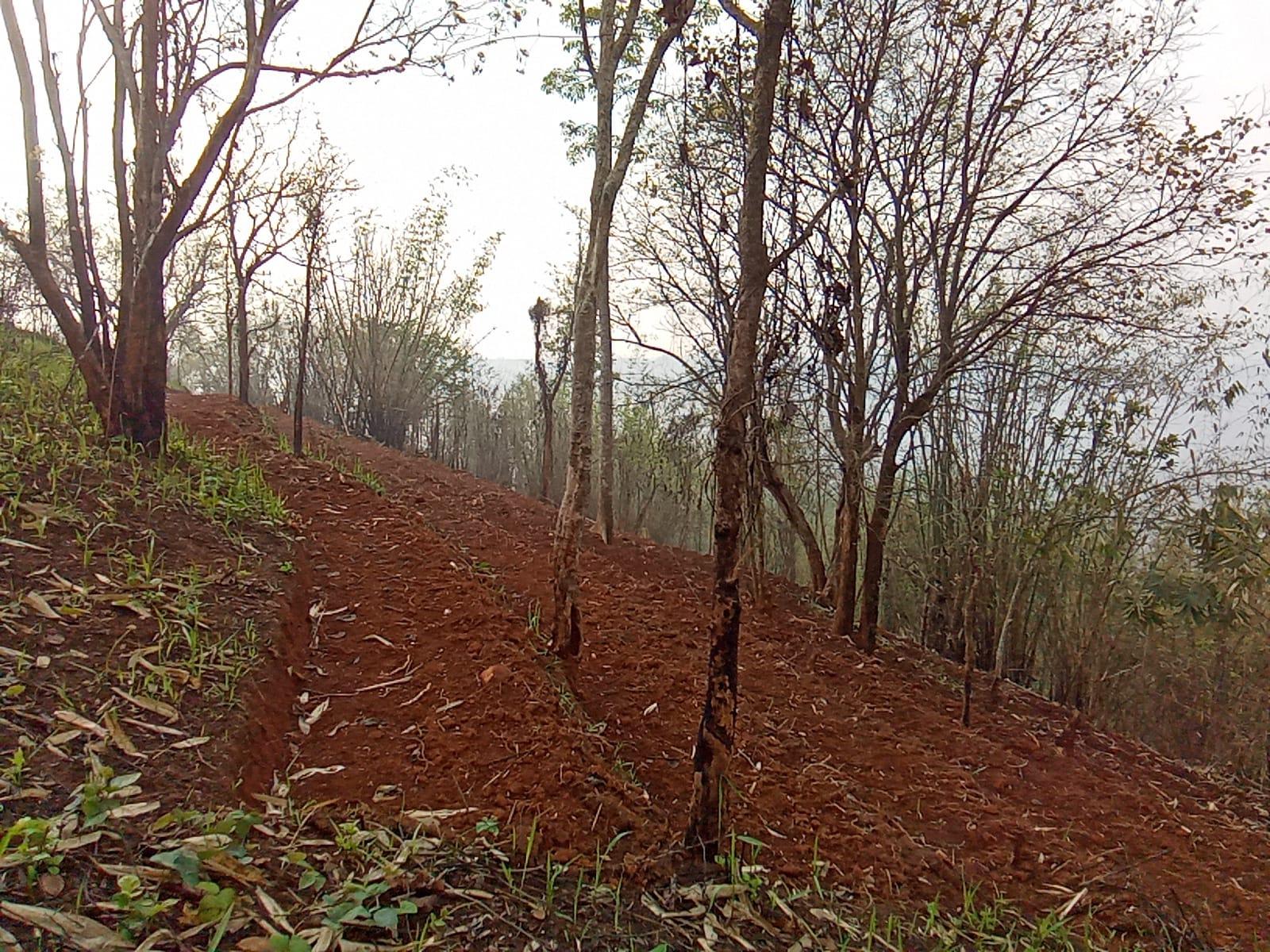
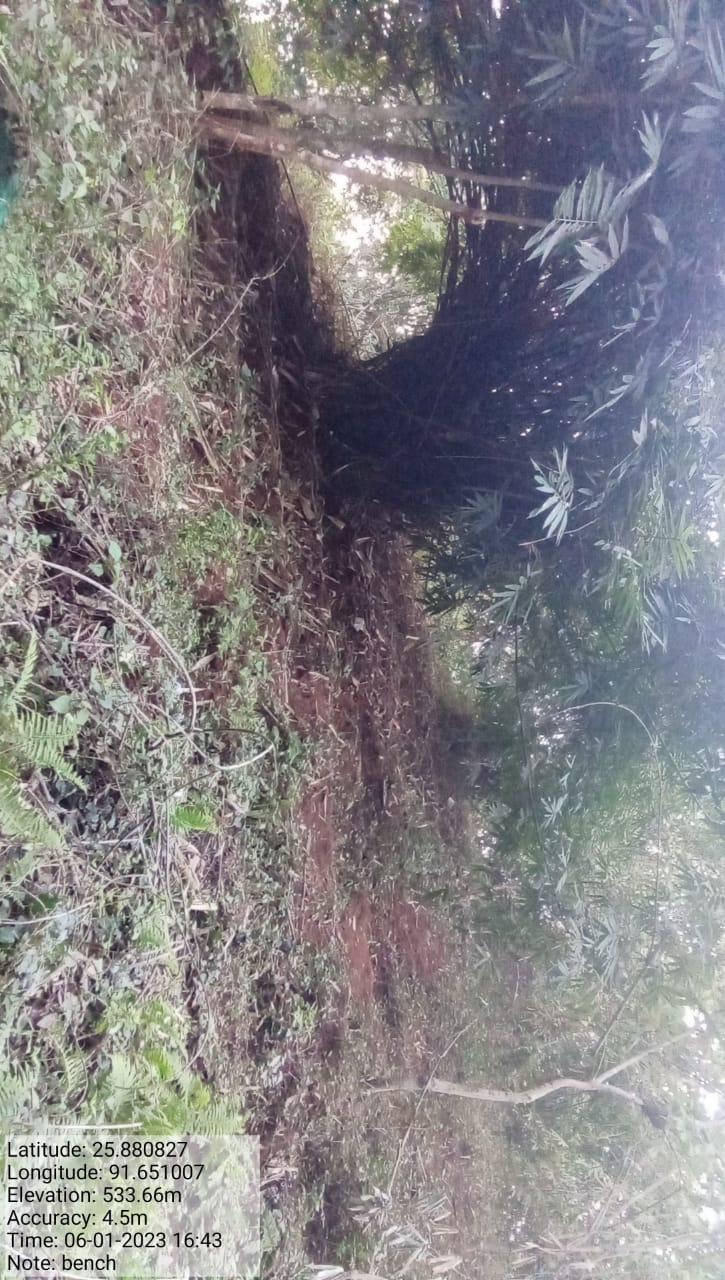
| 12. | Type Of Intervention | Site Name | GPS Co-ordinates | Amount Sanctioned | Work Status | |
|---|---|---|---|---|---|---|
| Head work | Jakwang | 25.8808 N | 92.6096 E | ₹79,3006.00 | Completed | |
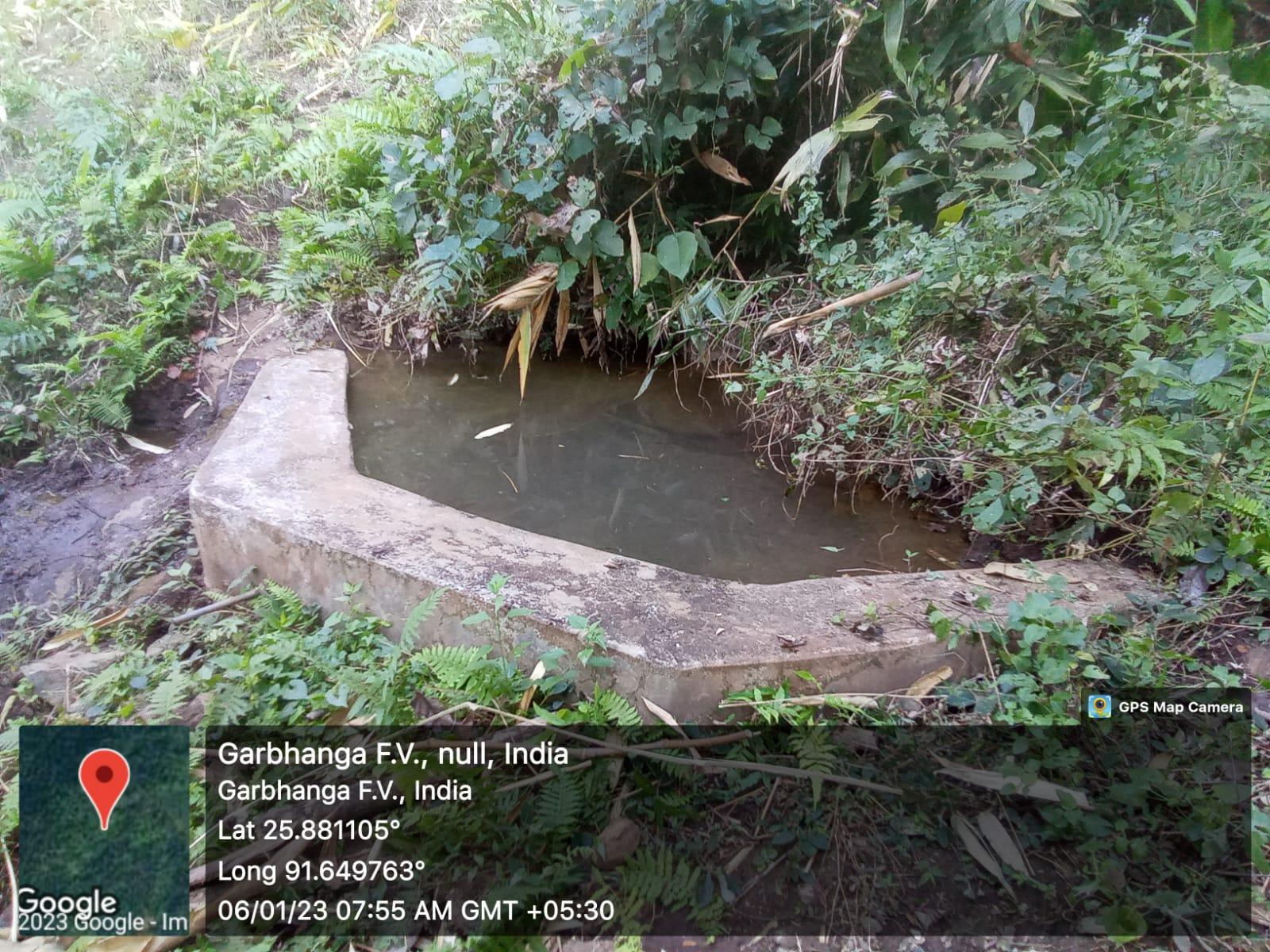
| 13. | Type Of Intervention | Site Name | GPS Co-ordinates | Amount Sanctioned | Work Status | |
|---|---|---|---|---|---|---|
| Upgradation of Nursery | Jan Pung Shnong | 25.878293, 91.645817 | ₹3,00,000.00 | Completed | ||
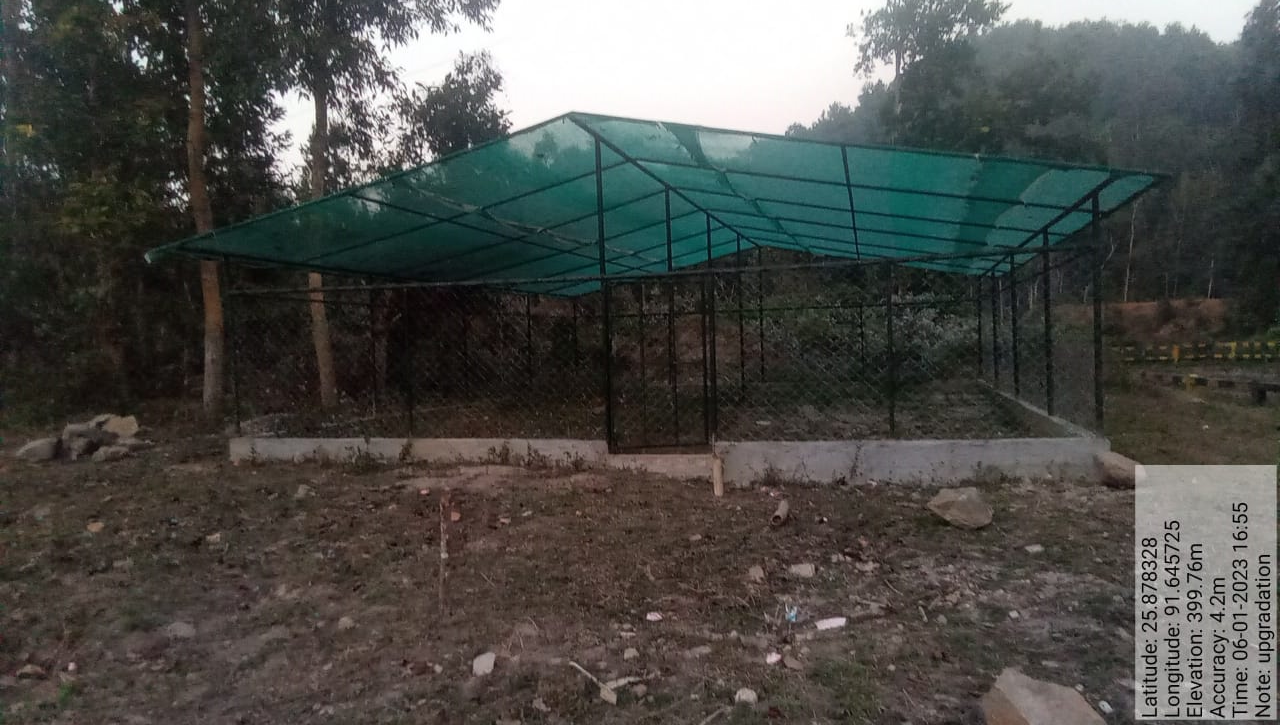
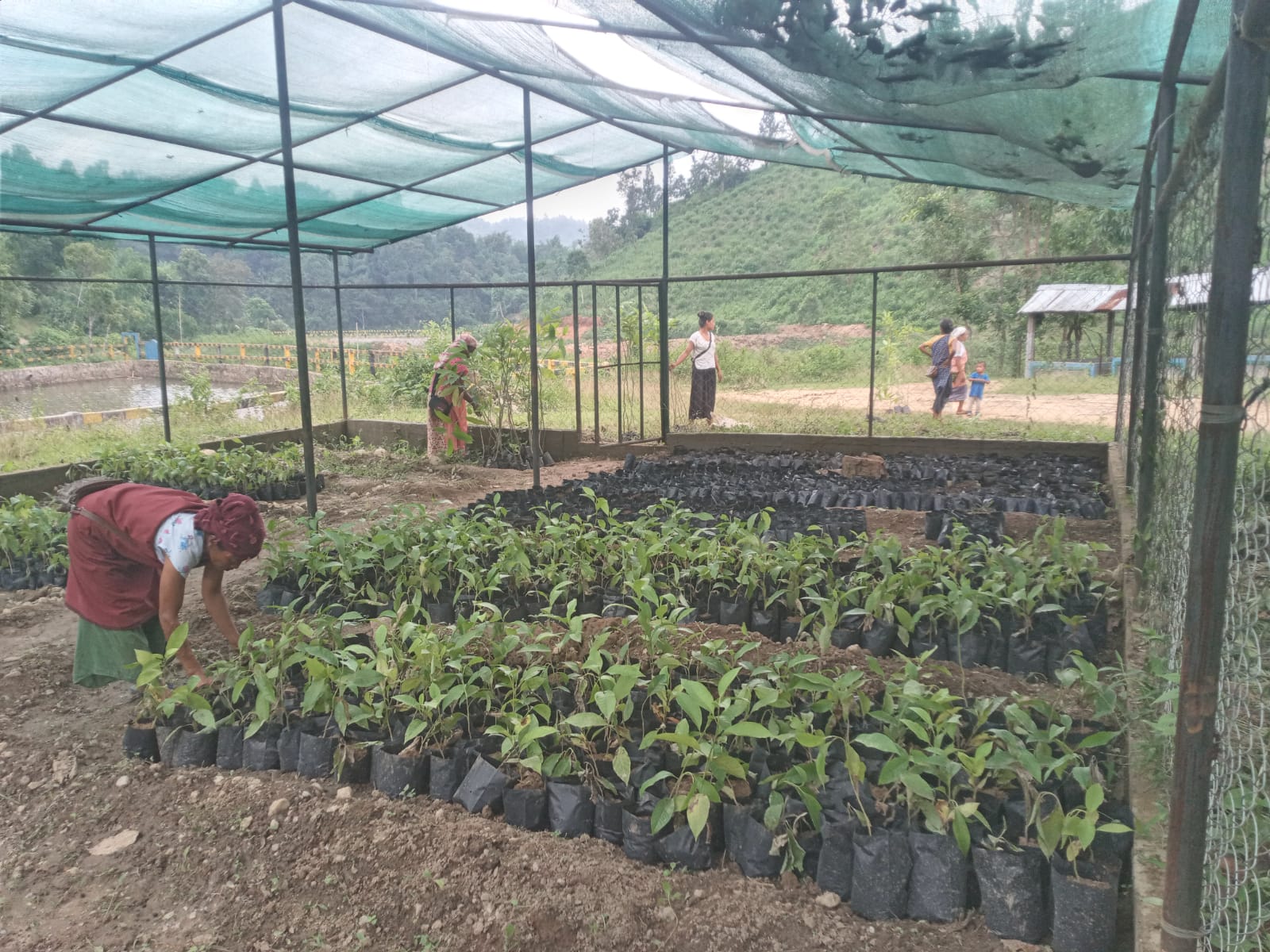
| 14. | Type Of Intervention | Site Name | GPS Co-ordinates | Amount Sanctioned | Work Status | |
|---|---|---|---|---|---|---|
| Retaining wall | Umtawing | 25.8750, 91.6494 | ₹200000.00 | Completed | ||
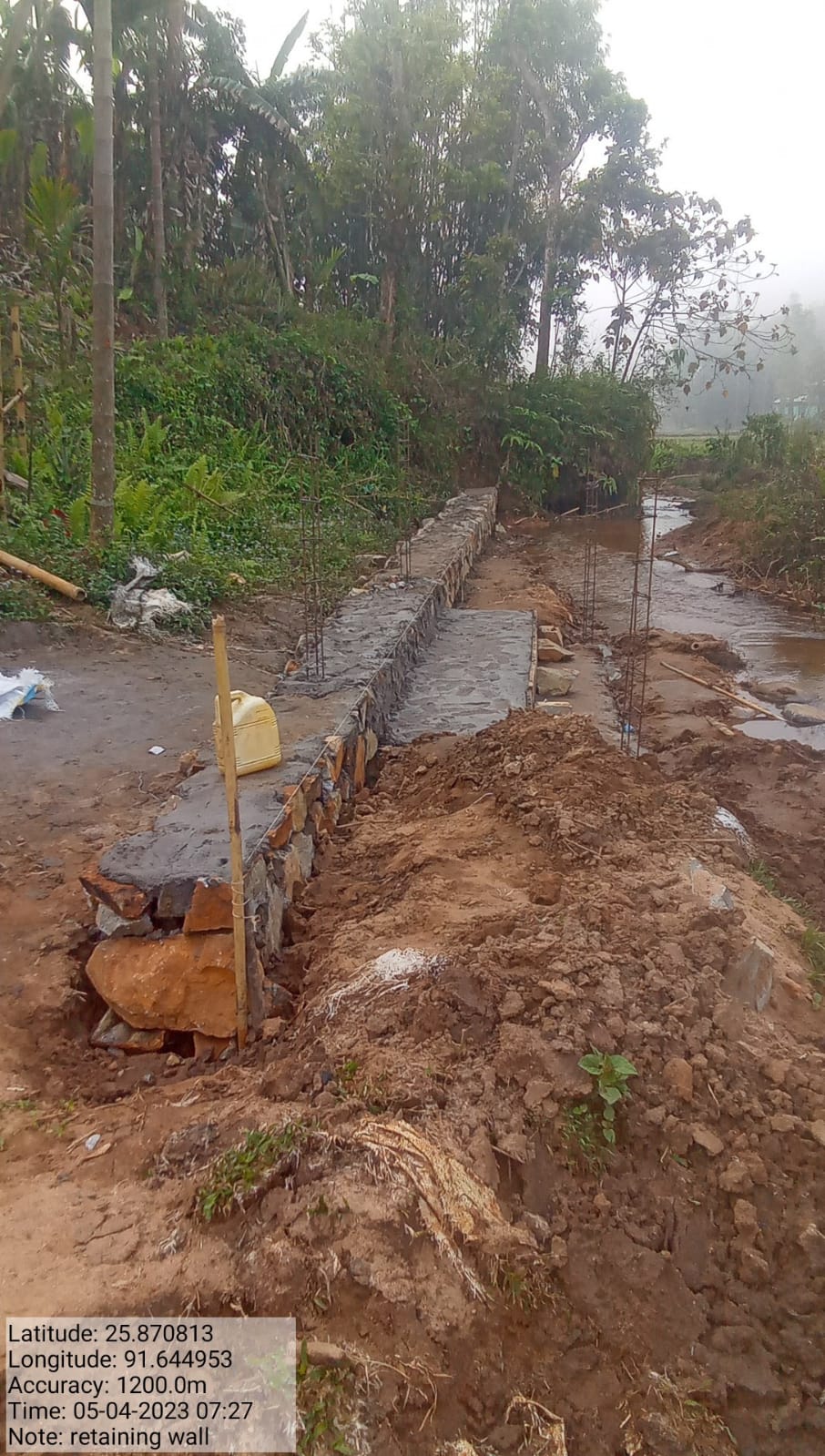
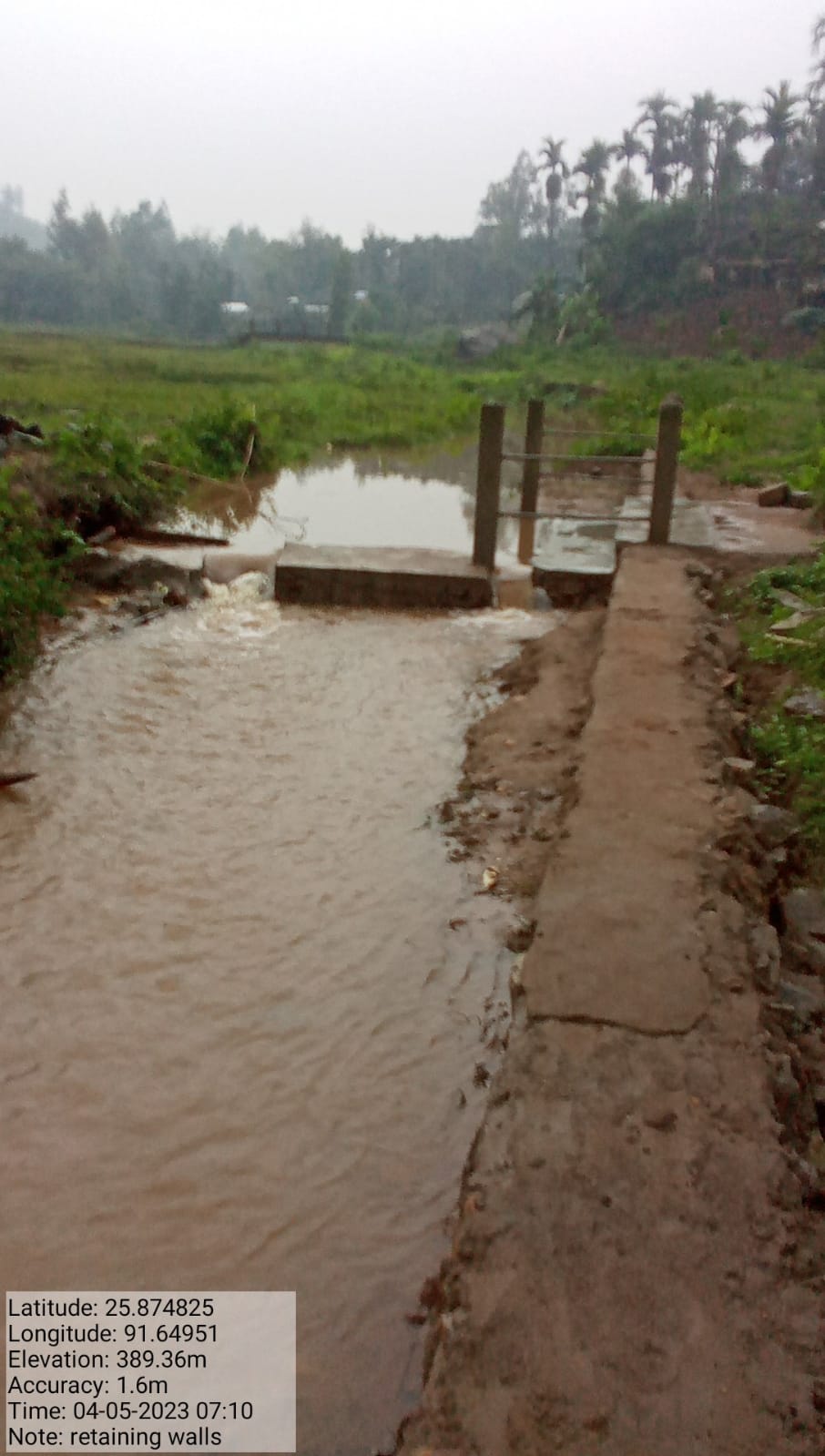
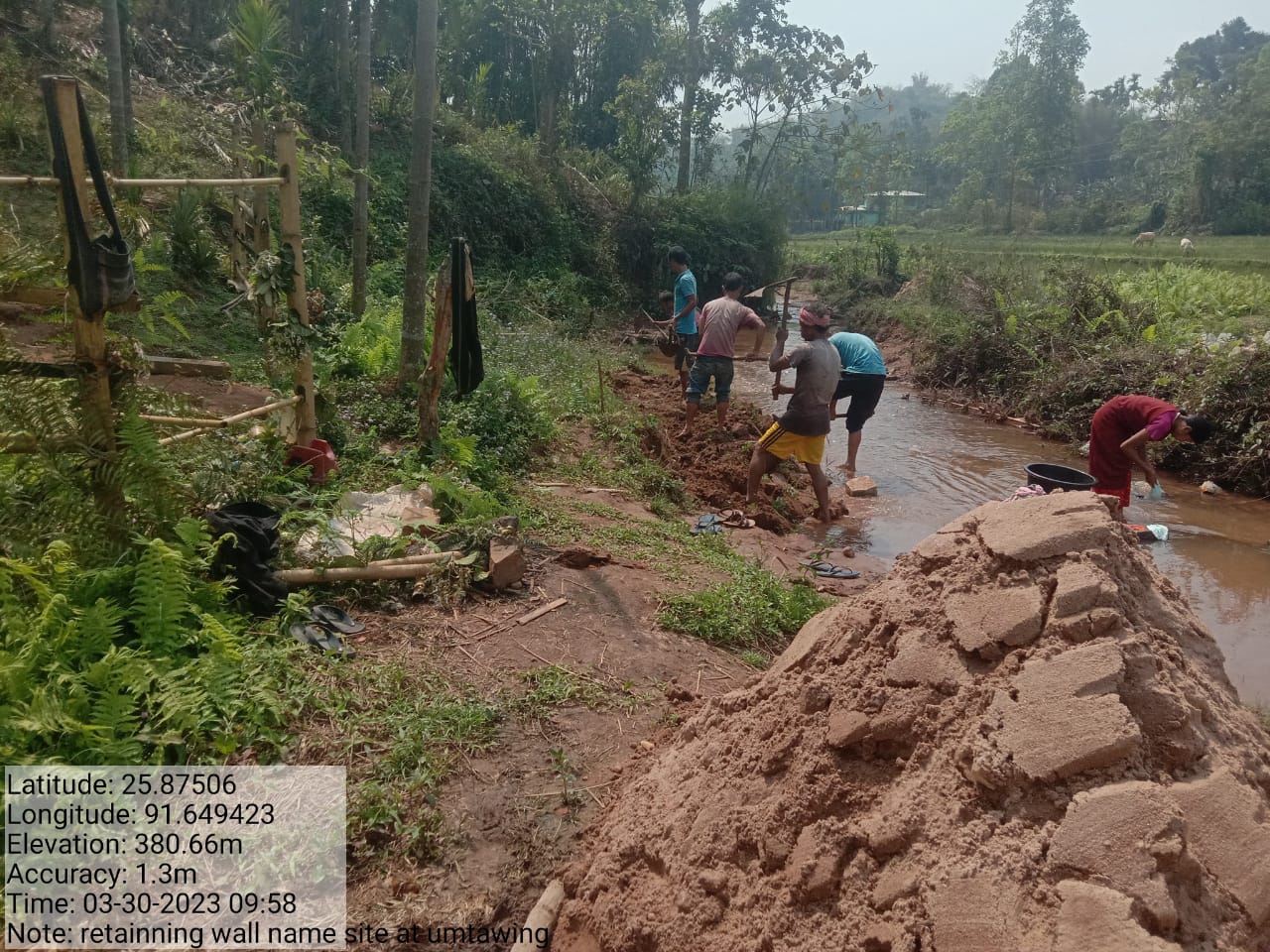
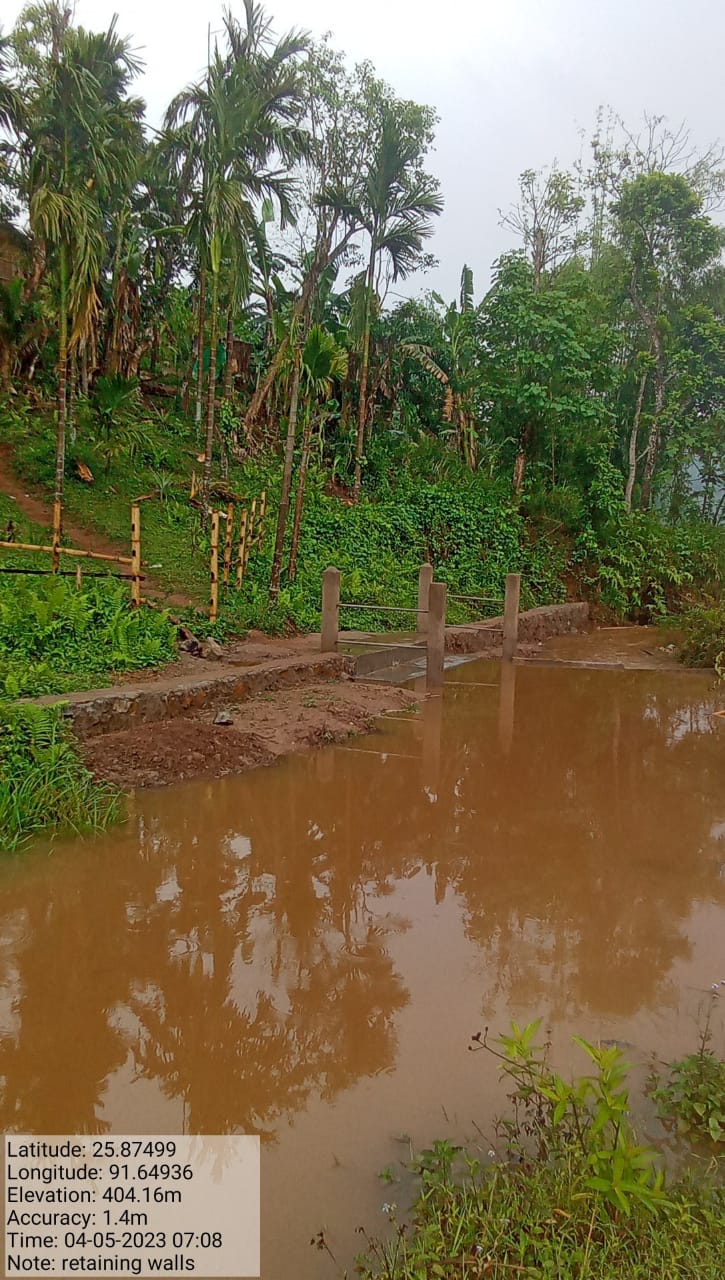

| Intervention | Amount | Site name | Status |
|---|---|---|---|
FMP Activities Fire control line Community forest boundary survey Enrichment planting in forest (afforestation) Assisted natural regeneration in open forests(contour bund) In-situ and ex situ conservation of rare and endangered plants Nursery for food forestry (saplings for the available nursery) |
48663 5000 36143 77860 5000 11000 |
Community Land | Completed |
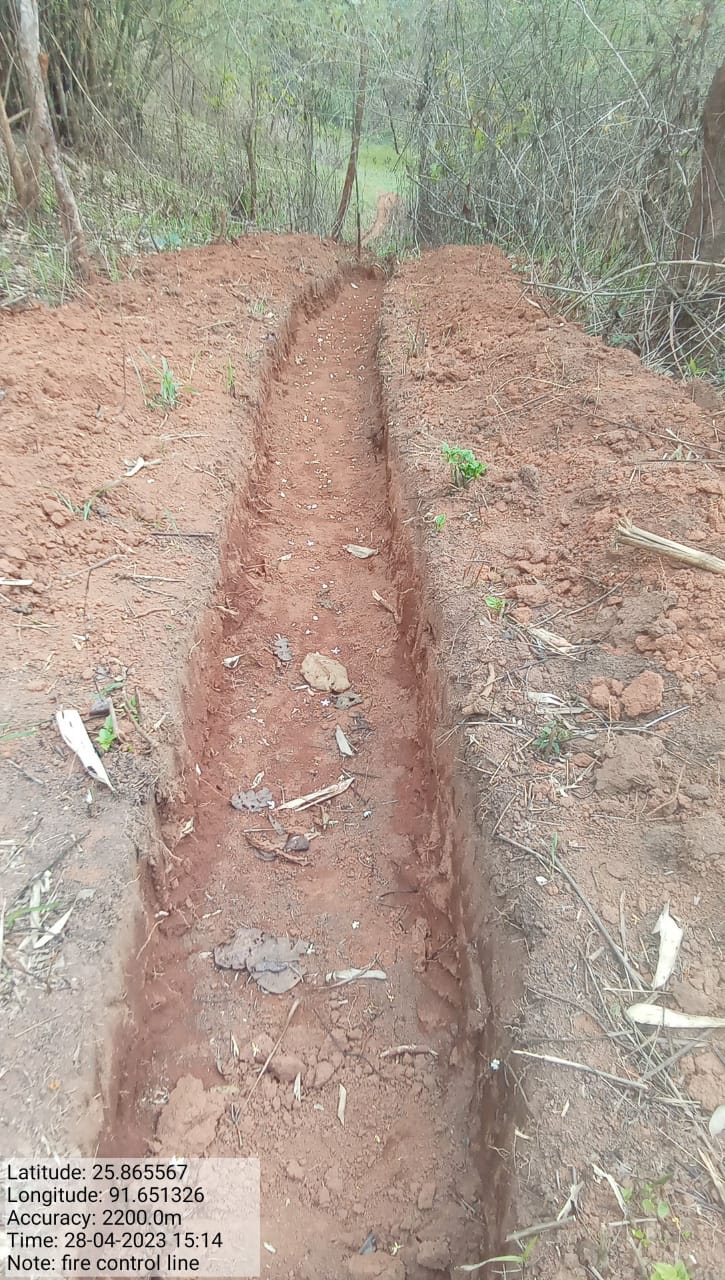

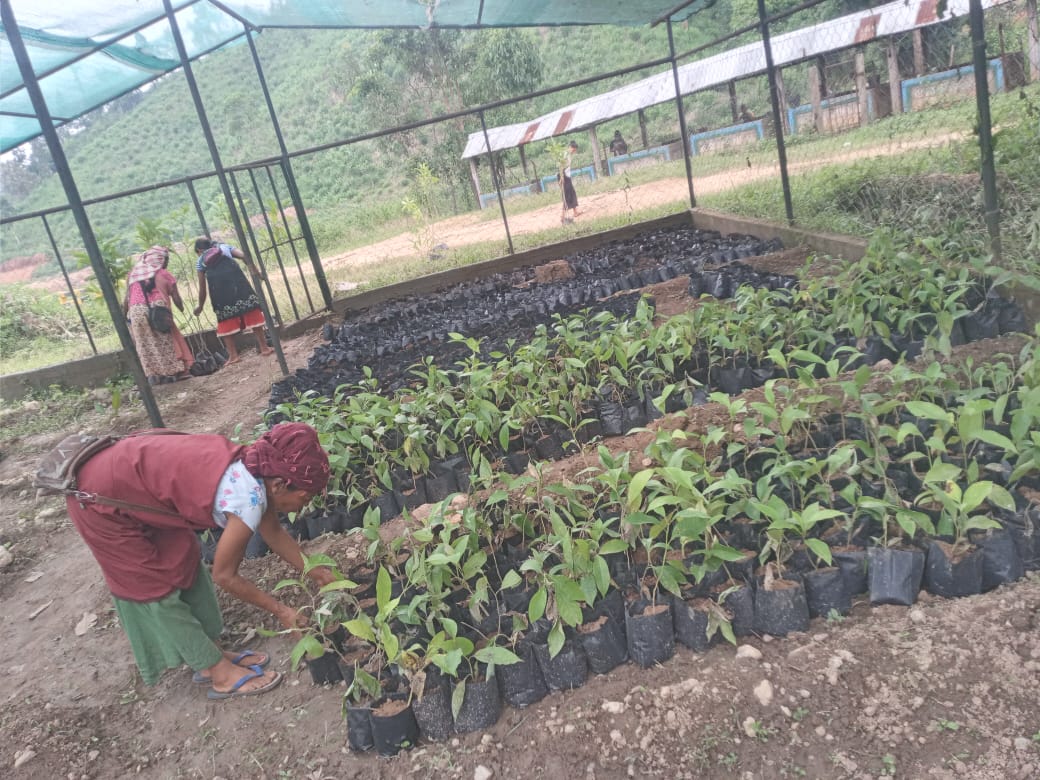
TESTIMONIALS 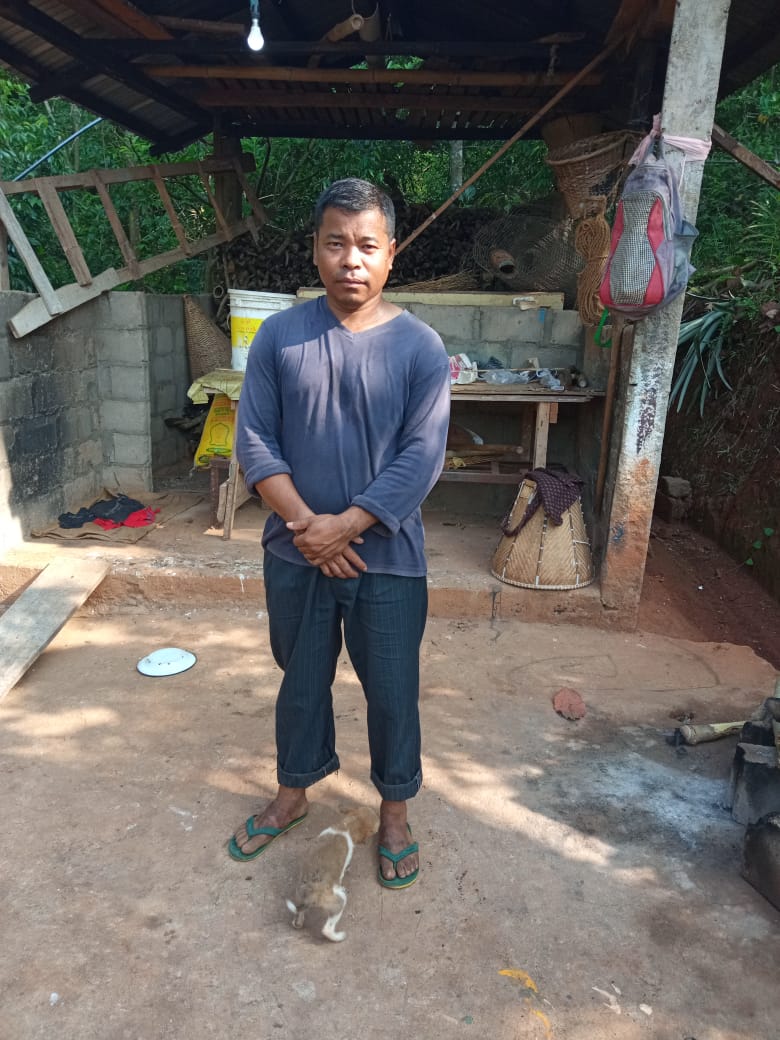
President -Donbor Sohkhwai
It's truly heartening to see about the significant positive changes and benefits that the project has brought to our village. The transformation showcases a comprehensive approach to environmental conservation, sustainability, and community development. Some of the key points under it are as follow:
Terracing: The implementation of terraces helps retain fertilizers and rainwater, contributing to soil fertility and water conservation. This sustainable practice supports agriculture and prevents soil erosion.
Rainwater Harvesting: The creation of gully plugs for rainwater harvesting is a crucial step toward water resource management. This helps prevent drought and ensures the availability of water during dry periods.
Tree Planting: The project's focus on afforestation contributes to a greener environment. Planting trees not only enhances the aesthetics but also provides ecological benefits such as improved air quality, habitat creation, and soil stabilization.
Check Dam and Protection Wall: The construction of check dams and protection walls aids in water retention, soil conservation, and erosion control. These structures play a significant role in maintaining ecosystem health.
Nursery and Seed Planting: Establishing a nursery and planting tree seeds on lands lacking vegetation is crucial for ecosystem restoration. It helps reclaim barren areas and contributes to biodiversity.
Vermicompost: The creation of vermicompost rooms underscores the importance of organic waste recycling. Earthworm fertilizers enrich the soil with nutrients and support sustainable farming.
Polyhouse and Contour Trenches: The polyhouse for flowers and contour trenches demonstrate a holistic approach to agriculture and land management. These practices contribute to crop diversity, soil conservation, and water efficiency.
Fire Control Measures: Implementation of fire control strategies safeguards against wildfires, protecting both the environment and the community.
Collaboration and Commitment: The collaboration between the CLLMP office and village members highlights the importance of teamwork and community involvement in achieving positive change.
Gratitude and Thankfulness: Your expression of gratitude toward the CLLMP office and members in your village reflects the recognition of their efforts and the positive impact they've brought.
The entire description portrays a comprehensive effort that
touches on various aspects of environmental sustainability and
community empowerment. The project's benefits extend beyond
immediate improvements, as they contribute to the long-term health
and resilience of the village's ecosystem. Our gratitude and
acknowledgment demonstrate the profound impact that community-driven
initiatives can have on creating a brighter, more sustainable future
for everyone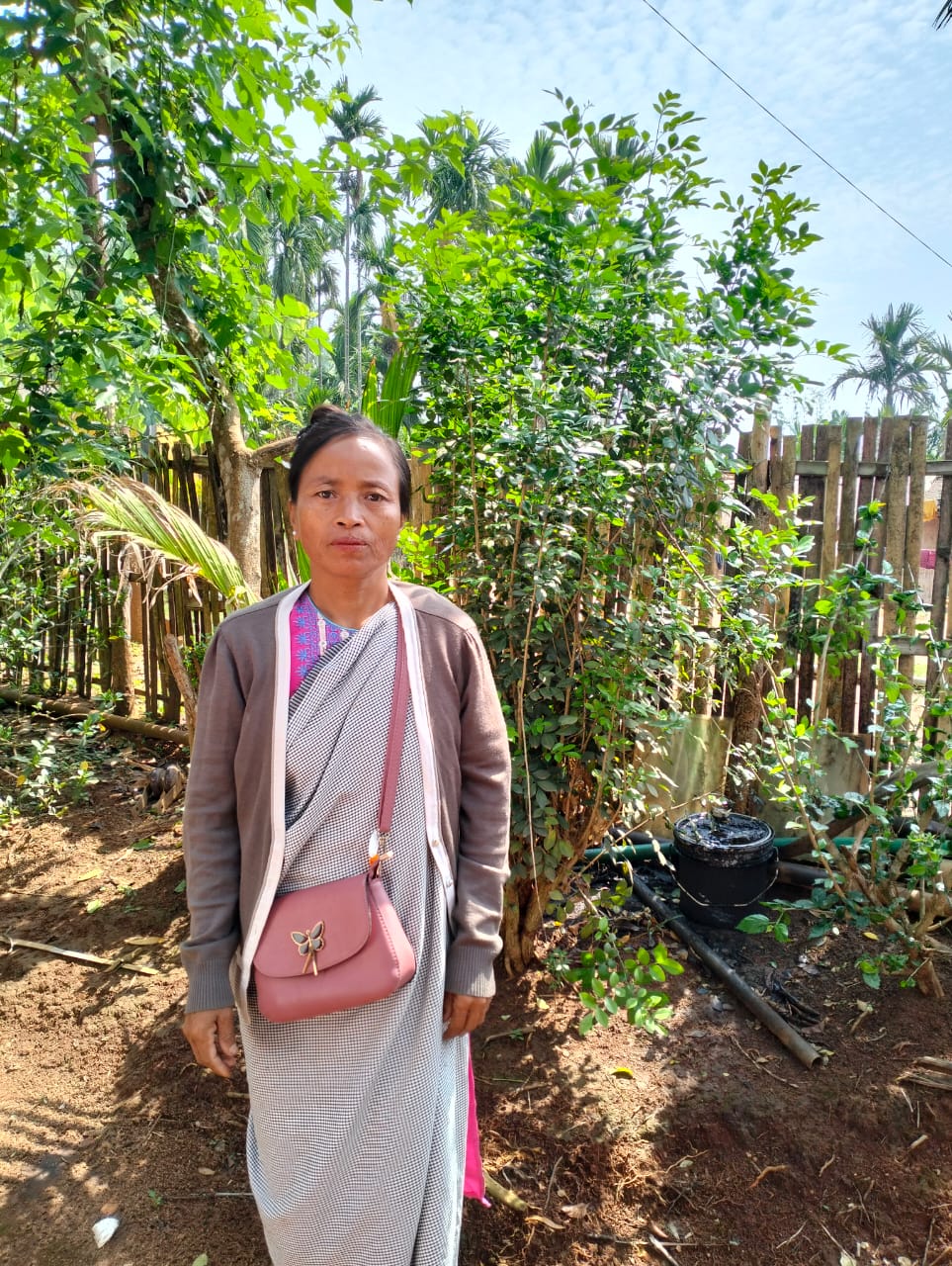
Secretary- Pios Thangkhiew
As the Secretary, I have received valuable training and acquired essential skills to work effectively in the village. The project has provided me with the opportunity to help the villagers understand the project's workings and benefits for the community. Being selected as the Secretary, it has given me a crucial leadership role in driving positive change and community development in the village.
Benefits from the Project:
Training and Skill Development: The project has provided valuable training that equips other villagers with essential skills and knowledge to work effectively in the village.
Community Understanding: The project has helped me in making the villagers understand the project's objectives and its impact on the village.
Improved Water Sources: By implementing techniques like contour trenches and gully plugging, the project has positively impacted water sources, leading to better water availability in the village.
Vermicompost Production: The experience of producing vermicompost has not only provided organic fertilizers for plantations but also contributed to sustainable waste management in the village.
Secretary Role: The project has given me the opportunity to serve as the Secretary, allowing me to actively contribute to the project's success and community development.
VCF M&E:- Robies Namsaw 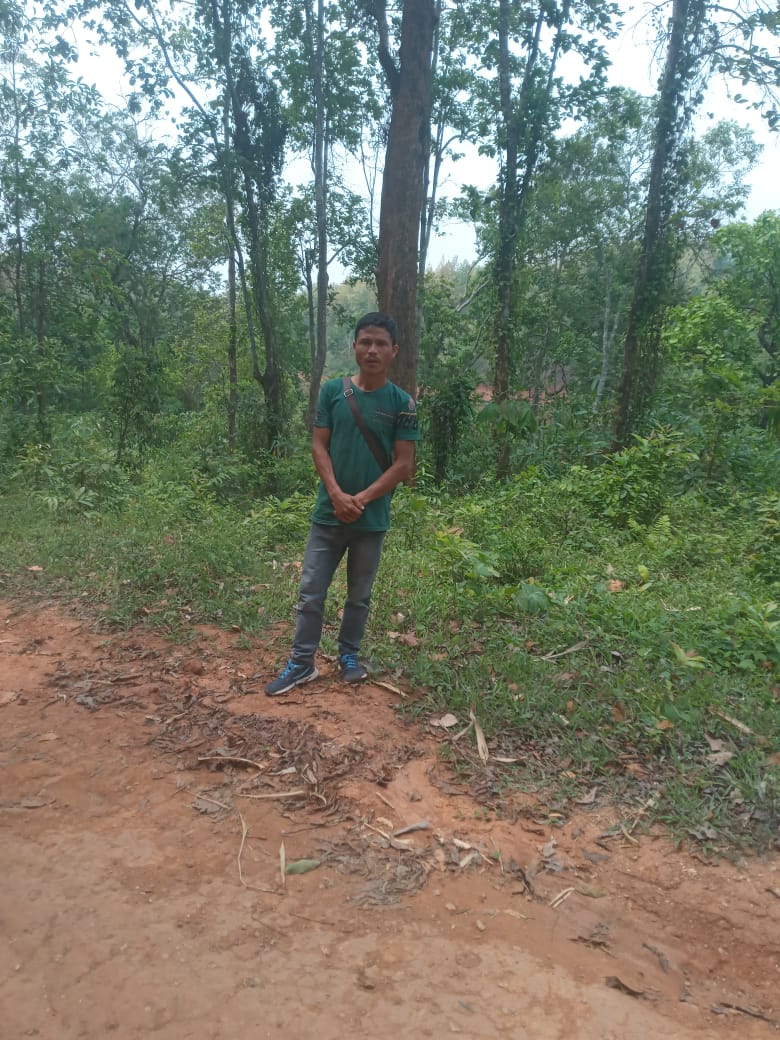
As a VCF, I have taken responsibility for preserving the environment, aiming to make the village greener and ensuring access to fresh air and clean water. The project has introduced effective measures such as contour trenches and gully plug, which have resulted in a positive impact on water sources, increasing water availability. Vermicompost production has been initiated, providing organic fertilizers to the community for plantations and promoting sustainable agricultural practices.
VCF Social - Mishorly Sohkhwai
As a VCF, I have had the opportunity to teach and raise awareness among the villagers about the benefits of the project. I have attended training, which has equipped me with knowledge and skills to effectively spread awareness and engage the community in environmental preservation and to be more responsible with our actions towards the environment. As a VCF, I have been able to spread awareness and educate the community about the importance of environmental preservation and sustainable practices.
VCF Environment:- Kharlin Namsaw 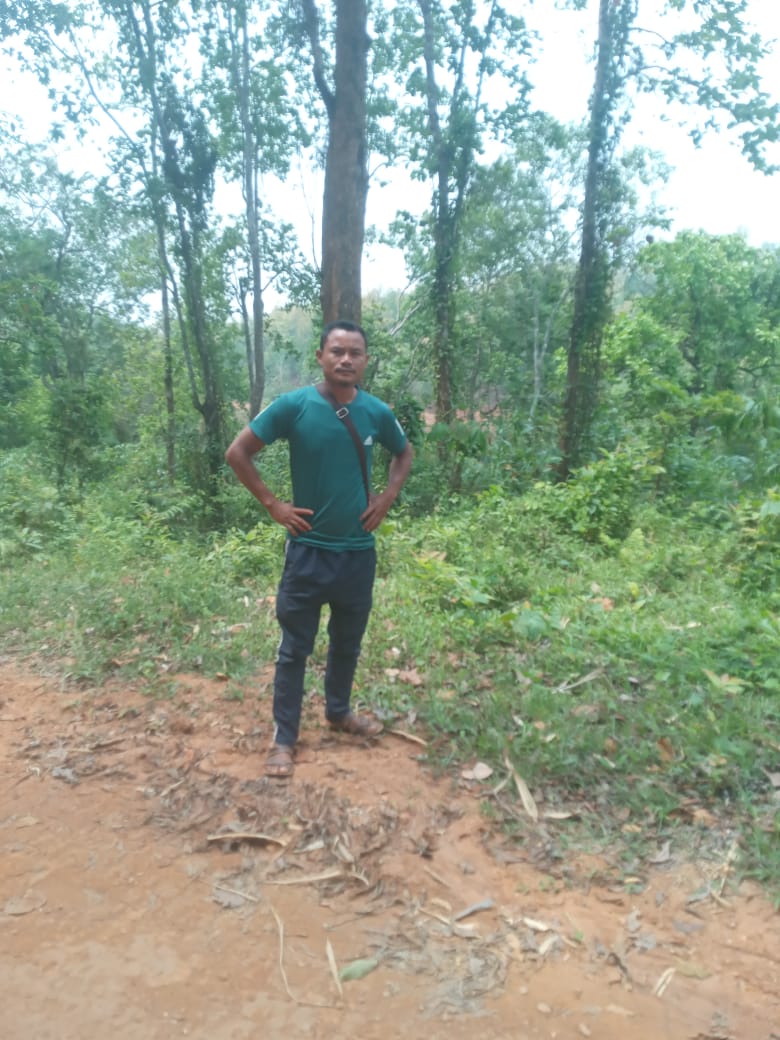
The spirit for managing and preserving the forest and environment is evident in our role as a VCF and also in our actions to strive towards building a better and healthier environment for everyone. The project has been perceived as a blessing to the village, and as a VCF I aspire for its continuation to ensure ongoing environmental preservation.I believe that this project is unique and essential in taking good care of the environment.
My dedication as a VCF and passion for environmental conservation have made a significant impact on the well-being of my village through the daily engagement and activities that were implemented in our community. Through our efforts in spreading awareness and implementing sustainable practices, we are contributing to the long-term health and prosperity of the community and the environment. Continued collaboration and dedication will further strengthen the positive impact of the project in our village
My role as a VCF has also enabled me to manage and advocate for the preservation of the forest and water sources in our village.